| “This site contains affiliate links for which OEMDTC may be compensated” |
NHTSA ID Number: 10191563
Manufacturer Communication Number: 02-157-14R
Summary
As part of our dedication to customer satisfaction, Subaru of America, Inc. is initiating a program to extend the original New Car Powertrain Limited Warranty coverage for excessive engine oil consumption on applicable vehicles to 8 years / 100,000 miles from the original warranty start date.
of America, Inc. is initiating a program to extend the original New Car Powertrain Limited Warranty coverage for excessive engine oil consumption on applicable vehicles to 8 years / 100,000 miles from the original warranty start date.
NUMBER: 02-157-14R
DATE: 08/28/14
REVISED: 04/13/21
| APPLICABILITY: | 2013-14MY Legacy and Outback Models with 2.5L FB Engines 2011-14MY Forester Models with 2.5L FB Engines 2015 MY Forester (Manual Transmissions Only) with 2.5L FB Engines 2012-13 MY Impreza and XV Crosstrek Models with 2.0 FB Engines 2014-15 MY Impreza and XV Crosstrek Models (Manual Transmissions Only) with 2.0 FB Engines |
| SUBJECT: | Engine Oil Consumption |
INTRODUCTION
As part of our dedication to customer satisfaction, Subaru of America, Inc. is initiating a program to extend the original New Car Powertrain Limited Warranty coverage for excessive engine oil consumption on applicable vehicles to 8 years / 100,000 miles from the original warranty start date. This Warranty Extension will not cover any excessive engine oil consumption found to be a result of any condition(s) other than those specifically described in this bulletin.
of America, Inc. is initiating a program to extend the original New Car Powertrain Limited Warranty coverage for excessive engine oil consumption on applicable vehicles to 8 years / 100,000 miles from the original warranty start date. This Warranty Extension will not cover any excessive engine oil consumption found to be a result of any condition(s) other than those specifically described in this bulletin.
This condition must be verified during an inspection and when determined necessary, an oil consumption test performed by an authorized Subaru retailer. SOA will inform vehicle owners this condition may exist via a customer letter. For vehicles within the coverage guidelines listed in this bulletin, customers can schedule an inspection appointment with an authorized Subaru
retailer. SOA will inform vehicle owners this condition may exist via a customer letter. For vehicles within the coverage guidelines listed in this bulletin, customers can schedule an inspection appointment with an authorized Subaru retailer.
retailer.
IMPORTANT: ALWAYS perform a Vehicle Coverage Inquiry on Subarunet to determine eligibility for this Warranty Extension before proceeding. The VIN should also be checked for any open campaigns or recalls at this time. See sample inquiry result below.
Effective immediately through April 21, 2017, ALL affected vehicles, regardless of mileage and warranty start date will be covered for these repairs. All inspections and repairs must be completed prior to the April 21, 2017 expiration date of this Warranty Extension.
IMPORTANT: In the event a vehicle has exceeded 100,000 miles prior to April 21, 2017, please contact the Subaru Claims Team at: 1-866-782-2782 to register the mileage PRIOR to claim submission.
Claims Team at: 1-866-782-2782 to register the mileage PRIOR to claim submission.
After April 21, 2017, this coverage extends the vehicle’s Powertrain Limited Warranty as it applies to excessive engine oil consumption to 8 years / 100,000 miles from the original warranty start date providing additional coverage for some vehicles. All inspections and repairs must be completed prior to expiration of this 8-year /100,000 Warranty Extension.
This bulletin contains several important revisions regarding warranty coverage and for determining when an engine oil consumption test should be performed. Review the entire bulletin to ensure full understanding of these and other changes.
Immediately delete and discard any electronic or paper copies you may have saved locally as they are no longer valid. If you have any locally saved copies of Service Bulletins 02-143-13R, 02-144-13R and 02-145-13R, delete or discard them as they have been invalid since the original release date of this bulletin and should never be used. Vehicles confirmed as having an excessive oil consumption condition which are within the supplied VIN ranges, will continue to be repaired by replacing the engine short block assembly.
VERY IMPORTANT: Read and understand this bulletin COMPLETELY before starting an oil consumption test or initiating any repairs.
It is critical to confirm the actual condition prior to attempting repairs. Some oil consumption should be expected as a by-product of engine operation. Failure to recognize this along with incorrectly diagnosing the condition can result in unnecessary repairs.
Examples of acceptable engine oil consumption:
- A vehicle not equipped with a low engine oil level warning lamp and found to have an engine oil level at or below the add mark on the dipstick after having traveled 4000 miles or more since the last engine oil change does not require an oil consumption test be completed.
- A vehicle equipped with a low engine oil level warning lamp** which has illuminated after having traveled 5000 miles or more since the last recorded engine oil change does not require an oil consumption test be completed.
The information supplied in this bulletin is only applicable to vehicles within the provided specific production ranges and confirmed as having an oil consumption rate of MORE THAN one-third (1/3) of a quart (10.6 fluid ounces) in 1200 miles as determined by an engine oil consumption test.
Concerns related to a possible oil consumption condition are generally initiated when the customer believes the engine oil level on the dipstick has dropped since the last time it was checked or when the low oil lamp illuminates. It is important to understand all the factors involved when determining if a repair is required or an oil consumption test should even be started.
REMINDER: Some oil consumption should be expected as a by-product of engine operation. How much and when it is consumed varies according to manufacturing tolerances, wear, and vehicle usage patterns. With the extended service intervals commonly used for today’s engines combined with one or more of the conditions listed below, it may be necessary to add engine oil between the scheduled maintenance intervals:
- When the engine is new and within the break-in period (during the first 1000 miles)
- When the engine oil being used is of lower quality (other than “Energy or Resource Conserving” API Classification SM or SN or ILSAC, look for the starburst design with GF-4 or GF-5)
- When the incorrect oil viscosity is used
- When engine braking is employed
- When the engine is operated at high engine speeds (continually or under frequent, hard acceleration)
- When the engine is operated under heavy loads (frequent carrying of heavy cargo, passengers or trailer towing)
- When idling for extended periods
- When the vehicle is operated in stop and go and/or heavy traffic situations
- When the vehicle is used under severe temperature conditions (cold or hot)
- When the vehicle accelerates and decelerates frequently.
Under these or similar operating conditions, the oil level should be checked more frequently. The engine oil and filter may also need to be changed more often.
As related information, the low oil level warning light (if equipped) is designed to illuminate when the engine oil level is approximately 1.1 quarts below full (engine OFF). Keep in mind, oil remains suspended in the engine while running and will not fully drain back until the engine has been shut off for at least 5 minutes. For this reason, the oil level should not be checked for at least 5 minutes after shutting the engine off. See Section 3 of the Owner’s Manual for more information on the oil level warning system.
**NOTE: A procedure to reduce false illumination of low oil level warning lamp (if equipped) is provided later in this bulletin for how to address customer concerns of the low engine oil level warning lamp illuminating prematurely when the oil level is either full or nearly full.
PRODUCTION CHANGE INFORMATION
Redesigned piston rings were incorporated into production as per the table below. Vehicles with VINs / engine numbers PRIOR to those listed below should be repaired following the procedures outlined in this TSB and the applicable Service Manual.
| MODEL | MODEL YEAR | TRANSMISSION | STARTING VIN | ENGINE NUMBER | |||||
| Forester | 2011-14 | MT | All | All | |||||
| 2015 | Below F*543624 | Below 527514 | |||||||
| 2011-13 | 4AT or CVT | All | All | ||||||
| 2014 | Below E*529004 | Below 132164 | |||||||
| Impreza 4- & 5-Door | 2012-14 | MT | All | All | |||||
| 2015 | Below F*270253 | Below 627010 | |||||||
| Impreza 4-Door | 2012 | CVT | All | All | |||||
| 2013 | Below D*033336 | Below 930025 (FA1 Line*) or 652640 (FB2 Line*) | |||||||
| Impreza 5-Door | 2012 | CVT | All | All | |||||
| 2013 | Below D*886714 | Below 930025 (FA1 Line*) or 652640 (FB2 Line*) | |||||||
| Legacy | 2013-14 | MT | All | All | |||||
| 2013 | CVT | Below D*048086 | Below 151602 | ||||||
| MODEL | MODEL YEAR | TRANSMISSION | STARTING VIN | ENGINE NUMBER | |||||
| Outback | 2013-14 | MT | All | All | |||||
| 2013 | CVT | Below D*321435 | Below 151602 | ||||||
| XV Crosstrek | 2013-14 | MT | All | All | |||||
| 2015 | Below F*270284 | Below 627010 | |||||||
| 2013 | CVT | Below D*856139 | Below 930025 (FA1 Line*) or 652640 (FB2 Line*) | ||||||
* NOTE: When determining the engine number, use the LAST 8 characters of the number stamped into the boss on top of the block adjacent to the starter and shown in the illustration. The engine number range for the FA1 assembly line is 800000 to 930025 and the FB2 range is 000000 to 652640.
PART INFORMATION
The chart below provides a required part list for the short block replacement procedure. This list is provided as a reference only and may not be totally complete depending on the needs of your specific repair. Always verify with your Parts Department that all needed parts with the most up-to-date part numbers are ordered.
| PART NUMBER | DESCRIPTION | QTY. /REPAIR | APPLICABILITY |
10103AC650 | Short Block Assy. | 1 | 2014-2015MY Forester |
| 2013-2014MY Legacy & Outback | |||
10103AC760 | 2013MY XV Crosstrek 2.0L CVT | ||
| 2013-2015MY XV Crosstrek 2.0L MT | |||
10103AC750 | 2012-2013MY Impreza 2.0L CVT | ||
| 2012-2015MY Impreza 2.0L MT | |||
10103AC660 | 2011-2013MY Forester | ||
11821AA660 | PCV Adaptor | 1 | |
| 44011AC030 | Exhaust Gasket | 2 | |
| 44616AA200 | Center Pipe Gasket | 1 | |
| 14035AA580 | Intake Gasket | 2 | |
14852AA040 | EGR Pipe Gasket | 1 | |
14738AA150 | 1 | ||
806912190 | O-Ring, Chain Cover | 3 | |
806924120 | 1 | ||
806915100 | O-Ring, Tensioner | 1 | Up to 1/2012 |
806916080 | 1 | 2/2012 and Later | |
| 10966AA040 | Seal, Spark Plug Tube | 4 | |
| 13270AA240 | Rocker Gasket | 1 | Impreza, Forester and XV Crosstrek |
| 13272AA170 | 1 | ||
13270AA27A | 1 | Legacy & Outback | |
13272AA21A | 1 | ||
806915170 | O-Ring, Cam Carrier | 4 | |
| 11044AA790 | Head Gasket | 1 | Legacy, Outback and Forester |
| 10944AA080 | 1 | ||
11044AA780 | 1 | Impreza and XV Crosstrek w/ 2.0L | |
| 10944AA070 | 1 | ||
| 11122AA350 | Sealing-Oil Pan | 2 | |
| 806949060 | O-Ring, Pick-Up Tube | 1 | |
| 806932030 | O-Ring, Upper Oil Pan | 3 | |
| 21236AA050 | Thermostat Gasket | 1 | |
806939060 | O-Ring, Crank Extension | 1 | |
| 806750080 | Oil Seal, Front Crankshaft | 1 | |
16608KA000 | Injector O-Rings | 4 | |
| 16698AA110 | 4 | ||
| 15208AA15A | Oil Filter | 1 | |
| 803916010 | Gasket, Drain Plug | 1 | |
| 806933010 | O-Ring, Coolant Cross-Over | 2 | |
| 11136AA140 | Oil Level Switch | 1 | All EXCEPT 2012MY Impreza 5MT & 2011-13MY Forester |
11136AA160 | 1 | 2012MY Impreza 5MT ONLY | |
14451AA050 | Filter (Cam Carrier Filter Screen) | 2 or 4 | 2- Engines with Only Intake AVCS |
The table below shows the latest available part numbers. It is to be used when determining the proper short block based on the transmission type.
| Short Block Applicability Table | |||
| Transmission Type | Existing Part Number | Latest Part Number | REMANUFACTURED Part Number |
| CVT | 10103AC390 | 10103AC760 ** ** | SOA402F600R1** |
| MT | 10103AC700 | ||
| CVT | 10103AC420 | 10103AC750 ** ** | SOA402F500R1** |
| MT | 10103AC690 | ||
| CVT / MT | 10103AC600 | 10103AC650 ** ** | SOA402F200R1** |
NOTES:
** The LATEST NEW part number shortblock should always be used whenever possible. If the LATEST NEW part number short block is not available, the applicable REMANUFACTURED short block assembly should be installed.
MISCELLANEOUS MATERIALS
| SOA (ORDERABLE) PART NUMBER | WARRANTY PART NUMBER | DESCRIPTION | QUANTITY |
SOA868V9610 | SOA635305 | ThreeBond 1217H | 1 |
| SOA868V9270 | SOA635041 | Super Coolant, (qt.) | 8 |
| SOA427V1310 | SOA635045 | Engine Oil (qt.) 0W-20 | 6 |
SOA345001 * * | SOA635071 | Cooling System Conditioner | 1 |
*Case of 12 bottles
SERVICE PROCEDURE / INFORMATION
Before starting any repairs, the first step is to always confirm the customer’s complaint. It is critical to get as much information from the customer as possible to help you make the most accurate diagnosis.
- Review all the available service and repair history along with any other records the customer can provide to establish whether or not the vehicle has been properly maintained.
-
- Perform a thorough visual inspection to make sure there are no external oil leaks that could be contributing to the condition.
-
- It is also very important to not overlook the engine’s PCV system and to confirm it is operating properly. Check the air filter assembly and throttle body / intake manifold for any excessive oil residue which could be an indicator of a sticking or failed PCV valve.
NOTES:
- An oil consumption test will need to be completed to determine the proper course of action. There is a specific procedure and Oil Consumption Test form which must be completed. See Subarunet \ Service \ Forms for the latest test form. Always print the latest form anytime a new test is started.
- Where applicable, available reprogramming to reduce the possibility of false low engine oil level warning lamp illumination must be installed.
- See Service Procedure to reduce false illumination of low oil level warning lamp (on models so equipped) later in this bulletin for further instructions. This must be completed at either the start or end of the consumption testing regardless of the final outcome.
- IMPORTANT: At the start of the Oil Consumption Test Form, specific information regarding what prompted (reason for) the testing must be collected. Once this questionnaire section of the form is completed, it must be faxed to 856-488-3199. Upon completion of the actual consumption test, the remainder of the form must be completed and faxed AGAIN to 856-488-3199. This information is being collected for quality assurance purposes only. You will not receive any response from these submissions. This is NOT an authorization process. Proceed with any necessary testing or repairs as indicated by the information provided in this service bulletin, the Oil Consumption Test form results, Subaru
 ’s Claims Policies and Procedures, and your evaluation of the actual condition presented based upon your review of all three areas. Keep in mind, these repairs should only be completed when unusual oil consumption has been confirmed.
’s Claims Policies and Procedures, and your evaluation of the actual condition presented based upon your review of all three areas. Keep in mind, these repairs should only be completed when unusual oil consumption has been confirmed.
Before initiating the consumption test, all basic checks must be completed. These include (but are not limited to): confirming the actual oil level, noting if any oil has been added prior to this visit and how much, checking for any external leaks, confirming PCV operation, and verifying that a consumption test has not already been started or completed previously. Always use the latest Oil Consumption Test form form found on Subarunet in the Service Forms area. Follow the instructions outlined on the form.
NOTE: The oil and filter change is only necessary if no prior consumption test has been completed or is already in process. There is no need for duplicate or repeat testing. One-time documented results are all that is required to move forward with these repairs. Always close the repair order on the day the oil change has been completed and submit the claim for the oil consumption test using the coding provided at the end of this bulletin. Indicate “Oil Consumption Test” in the comments field / box when entering your claim. DO NOT hold the repair order open until the vehicle returns. Have the customer drive the vehicle then return for inspection when any of the following have occurred:
- At least 1200 miles have elapsed
- When the low engine oil level warning lamp illuminates (when equipped)
- When the oil level reaches the lower hole in the dipstick/ gauge (as determined by the customer).
The customer should be advised to not add oil unless there will be a significant delay before they can return for inspection once a low oil condition occurs. A one-time check of the oil consumption by the retailer is all that is needed to establish if the condition outlined in this bulletin applies.
SPECIFIC SERVICE PROCEDURES
The following information is provided to underscore service procedures specific to the repairs outlined in this bulletin. The procedures provided here are specific to certain steps in the overall process. They are not meant to represent the entire repair process from start to finish. In some cases, they will differ greatly from the Service Manual instructions and should be followed in place of the Service Manual for these specific areas only. For the balance of the repair procedure, refer to the Service Manual. It is highly recommended to review all of the Service Manual procedures for short block replacement then review these specific procedures to become familiar with the differences.
- When draining the engine oil, do not remove the engine oil filter. Leave the existing oil filter in place through engine disassembly, reassembly, installation and initial startup after engine reassembly.
- When removing the engine, there is no need to remove the transmission case cover (CVT only) or to disconnect / disturb any of the transmission harness connectors. While raising the transmission with the service jack placed under the front differential as shown in the illustration below, only raise it enough to access and remove the engine mounting hardware. Raising it too high can push the transmission up into the bulkhead / transmission tunnel and possibly cause damage.
- When removing the CVT fluid cooler (if equipped), leave it attached to its mounting bracket and remove as an assembly (3 bolts) from the transmission. Disconnect just the engine coolant hoses from it and do not disturb the 2 short CVT fluid lines. Hook one of the cooler’s mounting bracket “ears” behind the bulkhead harness as shown in the photo below to keep the cooler assembly out of your way. Use a shop cloth between the “ear” and the bulkhead harness to prevent any chafing.
- To make separating the transmission (CVT) from the engine easier, there is a pry relief shown below in the machined mounting surface of the transmission case near the engine number. Use caution when applying any prying pressure and avoid twisting the tool to prevent case damage.
- Once the engine is removed, if you are using a generic engine stand (preferable since engine rotation is necessary), use the four mounting holes on the engine block shown below to mount it. NOTE: Do not use the mounting studs in the upper oil pan.
- When removing the intake manifold, as shown in the photos below, leave the TGV assemblies attached to the upper intake, remove the 2 nuts holding the EGR tube to the water pipe then remove the complete assembly from the cylinder heads as a unit.
- There is no need to remove the oil dipstick tube or the original oil filter from the front chain cover. While the cover is removed, store it face (front side) down to minimize the chances of damaging the machined sealing surface on the block / head side. Also, don’t use it as a tray to store other removed parts.
NOTE: On 2011MY Forester, refer to TSB 02-116-11 for revised crankshaft pulley, boss assembly, o-ring and retaining bolt information. Prior to engine number 0048496, these items are one-time use and MUST be replaced.
- IMPORTANT: After all 32 bolts securing the chain cover are removed, be EXTREMELY careful where you pry and what you pry on to break the silicone sealant’s bond. The photos below show an example of where NOT to pry. In this case, the cam cap became cracked requiring a complete cam carrier replacement. Patience is the key!
- Refer to the instructions found in the Technician Reference Booklet (TRB) for Technical Training Module 105: “Chain Driven Valve Train Boxer Engines” when removing and reassembling the timing chain components. The photos and instructions found in the TRB and provided below have shown to be preferable to those provided in the Service Manual.
- The timing chains driving the camshafts are identical and are provided with colored identification links used to align with component timing marks. Chain guides are also identical for the left and right banks. It is recommended to mark the parts as they are removed. Return them to their original positions during reassembly to maintain established wear patterns. Colors used for the identification links will vary.
- Begin timing chain removal by positioning the crankshaft keyway at the 6:00 position. The RIGHT bank intake camshaft timing mark (Δ) must be at 6:00 with right bank exhaust timing mark at 12:00 (camshafts will be unloaded).
- Compress the chain tensioner by hand, insert a pin through the lever into the access hole to lock the plunger in place then remove the 2 bolts, tensioner, guides and right side timing chain.
- After turning the crankshaft CLOCKWISE, repeat the procedure for the LEFT side with the timing marks (Δ) positioned as shown below. Align the crank sprocket keyway with RH chain dowel pin (shown in red below).
- Compress the chain tensioner by hand, insert a pin through the lever into the access hole to lock the plunger in place then remove the 2 bolts, tensioner, guides and the left side timing chain.
- After the left chain is removed, turn the crankshaft in a COUNTER CLOCKWISE direction until the timing mark on the crankshaft sprocket (NOT the keyway) is back to the 6:00 position as shown below. This positions all the pistons away from TDC and prevents accidental contact between the pistons and valves.
- Before proceeding, it is best to rotate the engine on the stand 90 degrees so it is vertical with one cylinder head facing up (head gasket surface horizontal).
- Remove the rocker cover then the cam carrier from the head that is “up”. Do not disturb the small camshaft end cap covers. Remove the cam carrier with the camshafts as an assembly. At this point, the rest of the valve train is sitting loose on the cylinder head. It is imperative all the rockers, selective lash caps and rocker pivots be returned to their original positions and orientation on the cylinder heads during reassembly. This eliminates the need to check and / or adjust the valve lash / cam clearances. TIP: An egg carton for each head makes a perfect organizer tray. Make sure to mark it as necessary (front, intake, exhaust) to eliminate any mixing of parts.
- Loosen the cylinder head bolts in proper order, remove the head, then flip the engine over and repeat the same steps for the opposite side.
- It is very important to take the time necessary to thoroughly clean the old silicone sealer from all the removed components before reassembly. It is a good idea to clean the surrounding areas then use tape to block off any oil passages in the front cover and cam carriers so any small bits of removed silicone debris are kept from entering the oil passages and possibly causing problems after reassembly. Once all the old sealer has been removed, remove any block-off tape, rinse out any oil passages thoroughly with brake cleaner and shop air.
- Don’t forget to replace (one-time use) the filter screens in the cam carriers. In addition, always be sure to do a thorough inspection and cleaning of the oil pan, pick-up tube and screen as shown in the photos below before reassembly.
Cam Carrier Filter Screen Oil Pick Up Tube/Filter Screen Assembly
REASSEMBLY
Begin by putting the new short block onto your engine stand using the same mounting points as before.
Important Reminders:
- Install the new one-time use PCV adapter. NOTE: Never try to reuse the original.
- Swap over the PCV assembly and the PCV baffle plate onto the front of the block.
NOTE: No sealer is used between the baffle plate and the block.
- If equipped, swap over the water jacket coolant spacers / baffles into the new block.
- Head gaskets are marked “L” and “R”. Always make sure they are properly installed while paying close attention to the sealer application areas as outlined in the Service Manual.
- Always make sure to clean the head bolt threads and apply engine oil to the threads and head bolt washers before starting the torque sequence. Always follow the torque sequence closely.
- IMPORTANT: The one-time use AVCS filter screens in the cam carriers are available separately (p.n. 14451AA050
 ). NOTE: Although the filter screens are not directional, they must be installed flush with the machined surface of the cam carrier as shown in the OK photo below. The NG photo shows the screen installed too deep into the camshaft carrier. Engines with AVCS on both intake and exhaust will have 2 filters in each carrier as opposed to just one (intake only AVCS).
). NOTE: Although the filter screens are not directional, they must be installed flush with the machined surface of the cam carrier as shown in the OK photo below. The NG photo shows the screen installed too deep into the camshaft carrier. Engines with AVCS on both intake and exhaust will have 2 filters in each carrier as opposed to just one (intake only AVCS).
- Before installing the upper and lower oil pans, always thoroughly clean and inspect the pick-up tube and screen. Always use new o-rings on the pick-up tube and both oil pans during reassembly.
- After cleaning the upper oil pan assembly, replace the oil level switch assembly as shown in the illustration on the right. Torque the 2 retaining bolts to 6.4 Nm (56 inch-pounds).
NOTE: DO NOT use any sealer in conjunction with the new o-ring included with the new oil level switch.
- Once the basic “long block” has been reassembled (valve cover to valve cover), proceed with installation of the timing components as outlined below.
- IMPORTANT REMINDER: To eliminate possible confusion, it is strongly recommended to follow the timing chain reinstallation procedure outlined in this TSB and / or the Technician Reference Booklet (TRB) for Module 105: “Chain Driven Valve Train Boxer Engines” instead of the Service Manual procedure.
- To begin timing chain re-installation, turn the crankshaft COUNTER-CLOCKWISE until the crankshaft sprocket keyway is back to the 6:00 position. This positions the pistons away from TDC and prevents accidental contact with the valves. NOTE: The keyway is NOT a timing mark. The oblong / oval-shaped timing mark must face front and be to the RIGHT of the keyway as shown below. Do not confuse this mark with a mark which may be found on the back side of the sprocket.
- Arrange the timing marks as shown below, turning the crankshaft CLOCKWISE into position. Align the indicator link with the timing mark on the crankshaft sprocket, keyway with the dowel pin.
- Align the indicator links to the timing marks found on the outside of the sprocket assemblies as shown in the photos below (Exhaust sprocket face images vary with / without exhaust VVT).
- Install the chain guides and tensioner. Once proper positioning has been confirmed, pull the pin to release the tensioner. With your hand, grab and squeeze the upper and lower chain / guides together as shown in the reference photo below to allow the plunger in the tensioner to fully extend and click into its furthest notch.
- If you have 3 notches showing, you want to get one more “click” so that 4 notches are visible as shown in the photos below. If you have 4 showing, you want to end up with 5. Whether you start with 3 or 4 will depend on the amount of wear present on the chains and guides. The number of clicks listed here is simply a guide. The point is to ensure proper initial chain tension is applied to avoid creating a brief rattle sound at engine start.
- If necessary, insert a plastic screwdriver handle between the lip of the block and the left side (B2) guide. Then, VERY CAREFULLY push down on the guide just enough to get the extra tensioner notch / “click”. When using this method, always make sure you are using plastic on plastic and NOT metal on plastic to avoid damaging the chain guides.
- Rotate the crankshaft COUNTER-CLOCKWISE until the crankshaft sprocket timing mark is at the 6:00 position. Position the cam sprocket timing marks as shown below; intake 6:00, exhaust 12:00.
- Align the indicator link with the timing mark on the crankshaft sprocket as shown below.
- Same as the left side, align the indicator links to the timing marks found on the cam sprocket assemblies. Install the chain guides and tensioner. Once proper positioning has been confirmed, pull the pin to release the tensioner. With your hand, grab and squeeze the upper and lower left side chain / guides together to allow the plunger in the tensioner to extend fully and click into its furthest notch as shown in the previous (right side) photo. If necessary, insert a rubber-coated plier handle between the ledge area on the front of the block and the right side (B1) lower chain guide. Then, VERY CAREFULLY lift up on the guide just enough to get the extra “click” on the tensioner as shown in the photo below.
IMPORTANT: When re-installing the front cover assembly, be very careful to not allow it to contact any of the timing sprockets. If contact does occur, it will most likely be with the exhaust sprockets and it is almost a guarantee the fresh silicone sealer beads applied to the cover will be disturbed. To minimize the possibility of this happening, alignment pins as shown in the photos below have been developed to “guide” the cover into its proper position without disturbing the fresh sealer. The Subaru Special Tool number for the alignment pin kit is J-51972. Each kit includes 2 pins.
- If alignment pins are not used and the sealer gets disturbed during the cover installation, unless properly addressed, the affected area(s) will most likely be the source of an oil leak after reassembly. Don’t hesitate to use a helper for the cover installation to prevent this from happening.
- REMINDER: When replacing the short block, in addition to transferring the crankshaft position sensor, be sure to index the reluctor properly onto the crankshaft as shown in the photos below. The reluctor is indexed by a dowel pin in the rear crankshaft flange which aligns with a corresponding hole in the reluctor. It is possible to install the reluctor without indexing it correctly. Failure to index the reluctor correctly will result in a no-start condition due to an out of time crank position signal to the ECM.
- Once the engine is back in the car and filled with fluids, remove the fuel pump fuse and crank the engine over (for no more than 10 seconds at a time) to prime the oiling system until the oil pressure warning light goes out. Re-install the fuel pump fuse then run the engine initially with the original oil filter left on the front cover for approximately 5 minutes to catch any other remaining debris. Check for any fluid leaks then install a new oil filter. Start the engine again and run it for another few minutes. Shut off the engine and allow it cool down for at least five minutes. Re-check and top off the engine oil to the full mark on the dipstick before releasing the vehicle.
- Be advised, some higher than expected oil consumption may occur initially following the shortblock replacement until the new piston rings become seated. While higher than expected normally, this oil consumption rate should not be as severe as verified prior to the repair. This will generally improve within 1000 miles of driving until the expected oil consumption rate is achieved.
- Complete the following procedure (where applicable) to conclude the repair procedure, even if no complaint of this condition has been indicated by the customer.
SERVICE PROCEDURE TO REDUCE FALSE ILLUMINATION OF THE LOW OIL LEVEL WARNING LAMP (ON MODELS SO EQUIPPED)
Any repairs performed as part of this bulletin MUST include installation of the applicable ECM reprogramming file for Oil Level Detection and replacement of the oil level switch. Refer to the applicable TSBs as listed below:
- 11-145-14R for 2013-2014MY Legacy and Outback models
- 11-148-14R for 2014-15MY Forester models
- 11-149-14R for 2013-14MY Impreza 2.0L and XV Crosstrek models
- 11-150-14R for 2012MY 2.0L Impreza models
VERY IMPORTANT: If a vehicle is presented where no repairs for actual oil consumption are required but an oil consumption test was completed, BOTH the applicable ECM reprogramming file for Oil Level Detection AND the updated oil level switch MUST be installed before releasing the vehicle to the customer.
NOTES:
SOA now highly recommends connecting the Midtronics GR8 Diagnostic Battery Charger to the vehicle and utilizing the Power Supply Mode feature anytime a vehicle control module is being reprogrammed. Once the GR8 is connected to the vehicle, as long as the battery is fully charged, it takes less than 3 minutes to boot-up the charger, select the Power Supply Mode, and have the battery voltage stabilized and ready for reprogramming.
VERY IMPORTANT: This information is applicable to the Midtronics GR8 Diagnostic Battery Charger ONLY. It does not apply to any other brand / type of “generic” battery charger whatsoever. ONLY the GR8 and its Power Supply Mode feature has been tested and approved by Subaru of America, Inc. (SOA).
If the GR8 indicates the vehicle’s battery must be charged, charge the battery using the GR8 before proceeding to reprogram the vehicle while using the Power Supply Mode.
- Control module failures as a result of battery discharge during reprogramming are not a matter for warranty. Should any DTCs reset after the reprogramming update is performed, diagnose per the procedure outlined in the applicable Service Manual.
16 Affected Products
Vehicles
| MAKE | MODEL | YEAR |
| SUBARU | CROSSTREK | 2013-2015 |
| SUBARU | FORESTER | 2011-2015 |
| SUBARU | IMPREZA | 2012-2015 |
| SUBARU | LEGACY | 2013-2014 |
| SUBARU | OUTBACK | 2013-2014 |
1 Associated Document
Manufacturer Communications
NUMBER: 02-157-14R
DATE: 08/28/14
REVISED: 04/13/21
MC-10191563-0001.pdf 2864.169KB
 Loading...
Loading...
NHTSA ID Number: 10188219
Manufacturer Communication Number: 02-157-14R
Summary
As part of our dedication to customer satisfaction, Subaru of America, Inc. is initiating a program to extend the original New Car Powertrain Limited Warranty coverage for excessive engine oil consumption on applicable vehicles to 8 years / 100,000 miles from the original warranty start date.
1 Associated Document
Manufacturer Communications
NUMBER: 02-157-14R
DATE: 08/28/14
REVISED: 02/19/21
MC-10188219-0001.pdf 2866.787KB
 Loading...
Loading...
NHTSA ID Number: 10186419
Manufacturer Communication Number: 02-157-14R
Summary
As part of our dedication to customer satisfaction, Subaru of America, Inc. is initiating a program to extend the original New Car Powertrain Limited Warranty coverage for excessive engine oil consumption on applicable vehicles to 8 years / 100,000 miles from the original warranty start date.
1 Associated Document
Manufacturer Communications
NUMBER: 02-157-14R
DATE: 08/28/14
REVISED: 01/26/21
MC-10186419-0001.pdf 2866.641KB
 Loading...
Loading...
NHTSA ID Number: 10144873
Manufacturer Communication Number: 02-157-14R
Summary
As part of our dedication to customer satisfaction, Subaru of America, Inc. is initiating a program to extend the original New Car Powertrain Limited Warranty coverage for excessive engine oil consumption on applicable vehicles to 8 years / 100,000 miles from the original warranty start date. This Warranty Extension will not cover any excessive engine oil consumption found to be a result of any condition(s) other than those specifically described in this bulletin. This condition must be verified during an inspection and when determined necessary, an oil consumption test performed by an authorized Subaru retailer. SOA will inform vehicle owners this condition may exist via a customer letter.
1 Associated Document
Manufacturer Communications
NUMBER: 02-157-14R
DATE: 08/28/14
REVISED: 08/22/18
MC-10144873-9999.pdf 2840.781KB
 Loading...
Loading...
NHTSA ID Number: 10235843
Manufacturer Communication Number: 0215714R
Summary
surface treatment change to oil control piston rings
1 Associated Document
Manufacturer Communications
NUMBER: 02-157-14R
DATE: 08/28/14
REVISED: 01/15/16
MC-10235843-9999.pdf 3163.764KB
 Loading...
Loading...
NHTSA ID Number: 10094229
Manufacturer Communication Number: 02-157-14R
Summary
THIS BULLETIN ANNOUNCES INFORMATION REGARDING A MAJOR CHANGE TO THE REPAIR PROCEDURES PREVIOUSLY OUTLINED IN SERVICE BULLETINS 02-143-13R, 02-144-13R AND 02-145-13R. THESE BULLETINS PROVIDED A REPAIR PROCEDURE FOR THE REPLACEMENT OF THE PISTON RINGS TO ADDRESS VERIFIED CONCERNS OF UNUSUAL ENGINE OIL CONSUMPTION. VEHICLES CONFIRMED AS HAVING THIS CONDITION WHICH ARE WITHIN THE SUPPLIED VIN RANGES WILL NO LONGER BE REPAIRED WITH PISTON RING REPLACEMENT. THE REVISED REPAIR PROCEDURE TO ADDRESS VERIFIED UNUSUAL OIL CONSUMPTION CONCERNS ON THESE SPECIFIC VEHICLES WILL CONSIST OF REPLACING THE ENGINE SHORT BLOCK ASSEMBLY.
1 Associated Document
Service Bulletin Document
NUMBER: 02-157-14R
DATE: 08/28/14
REVISED: 12/07/15
SB-10094229-2280.pdf 3124.694KB
 Loading...
Loading...
NHTSA ID Number: 10233058
Manufacturer Communication Number: 0215714R-1
Summary
Surface Treatment Change To Oil Control Piston Rings
1 Associated Document
Manufacturer Communications
NUMBER: 02-157-14R
DATE: 08/28/14
REVISED: 12/02/14
MC-10233058-9999.pdf 2624.064KB
 Loading...
Loading...
NHTSA ID Number: 10233056
Manufacturer Communication Number: 0215714R
Summary
Surface Treatment Change To Oil Control Piston Rings
1 Associated Document
Manufacturer Communications
NUMBER: 02-157-14R
DATE: 08/28/14
REVISED: 12/01/14
MC-10233056-9999.pdf 2623.095KB
 Loading...
Loading...
NHTSA ID Number: 10235912
Manufacturer Communication Number: 0215714R
Summary
Surface Treatment Change To Oil Control Piston Rings
1 Associated Document
Manufacturer Communications
NUMBER: 02-157-14R
DATE: 08/28/14
REVISED: 09/29/14
MC-10235912-9999.pdf 2510.519KB
 Loading...
Loading...
NHTSA ID Number: 10234915
Manufacturer Communication Number: 0215714Ra
Summary
Surface Treatment Change To Oil Control Piston Rings
1 Associated Document
Manufacturer Communications
NUMBER: 02-157-14R
DATE: 08/28/14
REVISED: 09/08/14
MC-10234915-9999.pdf 2526.203KB
 Loading...
Loading...
NHTSA ID Number: 10234914
Manufacturer Communication Number: 0215714R
Summary
Surface Treatment Change To Oil Control Piston Rings
1 Associated Document
Manufacturer Communications
NUMBER: 02-157-14R
DATE: 08/28/14
REVISED: 09/08/14
MC-10234914-9999.pdf 2510.699KB
 Loading...
Loading...
NHTSA ID Number: 10235841
Manufacturer Communication Number: 0214513R
Summary
surface treatment change to oil control piston rings
1 Associated Document
Manufacturer Communications
NUMBER: 02-145-13R
DATE: 09/25/13
REVISED: 05/27/14
MC-10235841-9999.pdf 5568.934KB
 Loading...
Loading...
NHTSA ID Number: 10233438
Manufacturer Communication Number: 0214513R
Summary
Surface Treatment Change To Oil Control Piston Rings
1 Associated Document
Manufacturer Communications
NUMBER: 02-145-13R
DATE: 09/25/13
REVISED: 03/20/14
MC-10233438-9999.pdf 1100.776KB
 Loading...
Loading...
NHTSA ID Number: 10235908
Manufacturer Communication Number: 0214513R
Summary
Surface Treatment Change To Oil Control Piston Rings
1 Associated Document
Manufacturer Communications
NUMBER: 02-145-13R
DATE: 09/25/13
REVISED: 10/10/13
MC-10235908-9999.pdf 2206.788KB
 Loading...
Loading...
NHTSA ID Number: 10234912
Manufacturer Communication Number: 0214413R
Summary
Surface Treatment Change To Oil Control Piston Rings
1 Associated Document
Manufacturer Communications
NUMBER: 02-144-13R
DATE: 09/25/13
REVISED: 08/28/2014
MC-10234912-9999.pdf 183.675KB
 Loading...
Loading...
NHTSA ID Number: 10235840
Manufacturer Communication Number: 0214413R
Summary
surface treatment change to oil control piston rings
1 Associated Document
Manufacturer Communications
NUMBER: 02-144-13R
DATE: 09/25/13
REVISED: 05/27/14
MC-10235840-9999.pdf 5570.666KB
 Loading...
Loading...
NHTSA ID Number: 10233437
Manufacturer Communication Number: 0214413R
Summary
Surface Treatment Change To Oil Control Piston Rings
1 Associated Document
Manufacturer Communications
NUMBER: 02-144-13R
DATE: 09/25/13
REVISED: 03/27/14
MC-10233437-9999.pdf 1100.991KB
 Loading...
Loading...
NHTSA ID Number: 10233060
Manufacturer Communication Number: 0214413R
Summary
Surface Treatment Change To Oil Control Piston Rings
1 Associated Document
Manufacturer Communications
NUMBER: 02-144-13R
DATE: 09/25/13
REVISED: 12/03/13
MC-10233060-9999.pdf 1492.229KB
 Loading...
Loading...
NHTSA ID Number: 10235907
Manufacturer Communication Number: 0214413R
Summary
Surface Treatment Change To Oil Control Piston Rings
1 Associated Document
Manufacturer Communications
NUMBER: 02-144-13R
DATE: 09/25/13
REVISED: 10/21/13
MC-10235907-9999.pdf 1486.775KB
 Loading...
Loading...
NHTSA ID Number: 10235839
Manufacturer Communication Number: 0214313R
Summary
surface treatment change to oil control piston rings
1 Associated Document
Manufacturer Communications
NUMBER: 02-143-13R
DATE: 09/19/13
REVISED: 05/27/14
MC-10235839-9999.pdf 5568.395KB
 Loading...
Loading...
NHTSA ID Number: 10233436
Manufacturer Communication Number: 0214313R
Summary
Surface Treatment Change To Oil Control Piston Rings
1 Associated Document
Manufacturer Communications
NUMBER: 02-143-13R
DATE: 09/19/13
REVISED: 03/20/14
MC-10233436-9999.pdf 1102.545KB
 Loading...
Loading...
NHTSA ID Number: 10233059
Manufacturer Communication Number: 0214313R
Summary
Surface Treatment Change To Oil Control Piston Rings
1 Associated Document
Manufacturer Communications
NUMBER: 02-143-13R
DATE: 09/19/13
REVISED: 12/03/13
MC-10233059-9999.pdf 1483.742KB
 Loading...
Loading...
NHTSA ID Number: 10235905
Manufacturer Communication Number: 0214313R
Summary
Surface Treatment Change To Oil Control Piston Rings
1 Associated Document
Manufacturer Communications
NUMBER: 02-143-13R
DATE: 09/19/13
REVISED: 11/11/13
MC-10235905-9999.pdf 1483.262KB
 Loading...
Loading...
NHTSA ID Number: 10235906
Manufacturer Communication Number: 0214313R1
Summary
Surface Treatment Change To Oil Control Piston Rings
1 Associated Document
Manufacturer Communications
NUMBER: 02-143-13R
DATE: 09/19/13
REVISED: 10/10/13
MC-10235906-9999.pdf 2193.135KB
 Loading...
Loading...
- Mobil 1 Advanced Fuel Economy full-synthetic motor oil 0W-20 is low-viscosity to help improve fuel economy.*
- Utilizes Mobil 1’s signature Triple Action Formula to deliver outstanding engine performance, protection, and cleanliness
- Helps protect critical engine parts for up to 10,000 miles between oil changesm,** controlling oxidation to prevent oil breakdown and maintaining excellent viscosity
- Meets ILSAC GF-6 standards to help provide low-speed pre-ignition (LSPI) and timing chain wear protection while keeping your engine clean
- Helps extend engine life by working to prevent damaging deposits and sludge buildup
- 6X better wear protection on critical engine parts than industry standards**
- 1.3X better sludge protection than industry standards*
- 3X Stronger against viscosity breakdown than leading full synthetic^
- Protection for 10,000 miles between oil changes
- Meets or exceeds the following specifications: API SP/SN PLUS/SN | ILSAC GF-6 | GM dexos1 Gen 3 | Meets Ford WSS-M2C947-B1 | Meets Ford WSS-M2C962-A1 |
- Mobil 1 High Mileage full-synthetic motor oil 0W-20 is designed for engines with over 75,000 miles to go up to 10,000 miles between oil changes.*
- Utilizes Mobil 1’s signature Triple Action Formula to deliver outstanding engine performance, protection, and cleanliness
- Meets ILSAC GF-6 standards to help provide low-speed pre-ignition (LSPI) and timing chain wear protection while keeping your engine clean and helping to improve your fuel economy
- Provides excellent internal engine heat protection (up to 500 degrees F) and low temperature protection (to -30 degrees F)
- Mobil 1 is specially formulated to help remove sludge and lower engine temperatures
- 3X Stronger than the leading full synthetic*
- 10X Better high stress performance**
- 20,000 miles between oil changes***
- Approved and Licensed Specifications: Exceeds API SP/SN PLUS/SN/SM |ILSAC GF-6 | GM dexos1 Gen 3 | Meets engine test requirements of Chrysler MS 6395 | Meets Ford WSS-M2C947-B1 | Meets Ford WSS-M2C962-A1 |
- Viscosity breakdown as measured in Kurt Orbahn test on 5W-30 grade |**As measured in Seq IX test under high load/torque conditions vs. API SP test limits | ***Or one year, whichever comes first
- Advanced protection against the four main causes of engine breakdown: wear friction heat and deposits
- Full synthetic 0W-20 formula offers 24X stronger protection against engine-killing contaminants than the leading full synthetic motor oil
- 40% better wear protection vs. industry standards as tested in the Sequence IVB engine test
- 25% better deposit protection with superior engine cleaning detergents as tested in the GMOD engine test
- Meets or exceeds all requirements of ILSAC GF-6A, API SP, API SN with SN Plus, API SN, GM dexos 1 Gen 3
- Full synthetic 0W-20 motor oil that is made with natural gas and designed to maximize engine protection
- Backed by a 15,000-mile protection guarantee* to protect your pursuit of every mile
- Provides better fuel economy (based on the latest industry standards)
- Keeps pistons cleaner than the toughest industry standard (based on Sequence IIIH results)
- Provides unsurpassed wear protection (based on Sequence IVA wear test using SAE 5W-30)
- Mobil 1 Advanced Fuel Economy full-synthetic motor oil 0W-20 is low-viscosity to help improve fuel economy.*
- Utilizes Mobil 1’s signature Triple Action Formula to deliver outstanding engine performance, protection, and cleanliness
- Helps protect critical engine parts for up to 10,000 miles between oil changes,** controlling oxidation to prevent oil breakdown and maintaining excellent viscosity
- Meets ILSAC GF-6 standards to help provide low-speed pre-ignition (LSPI) and timing chain wear protection while keeping your engine clean
- Helps extend engine life by working to prevent damaging deposits and sludge buildup
- Our most advanced full synthetic 0W-20 engine oil, designed for unbeatable engine protection*
- Pennzoil Ultra Platinum comes with a 20-year, 750,000 mile warranty** to protect your engine and give you peace of mind to drive every mile as hard as you can
- Made with natural gas
- Outstanding performance in extreme temperatures
- Designed for high-performance engines, it helps protect engines from loss of power
- Full synthetic 0W-20 motor oil provides strong engine performance and protection against deposits between oil changes
- Ideal for use in modern turbocharged engines and high-performance vehicles like sports cars, SUVs, trucks, and minivans
- Designed to deliver more power and less friction, reducing friction to maximize horsepower (compared to Quaker State motor oil)
- Provides improved fuel economy (based on the latest industry standard)
- Excellent protection against formation of sludge and other harmful deposits (based on Sequence IIIH & VH tests on 0W-20 engine oil)
- Full synthetic formula is engineered with Enhanced MaxLife Technology to prevent engine breakdown in vehicles with over 75,000 miles
- Formulated with seal conditioners to prevent and treat oil leaks, Valvoline Full Synthetic High Mileage minimizes oil consumption and maximizes engine life
- 50% better wear protection than the industry standard and 25% extra defense against deposits, sludge, corrosion and rust
- Meets or exceeds all requirements of ILSAC GF-6A, API SP, API SN with SN Plus, API SN
- American made and formulated, from the Original Motor Oil brand trusted for more than 150 years
SEOCONTENT-START
Bulletin Number: 02-157-14R; Revised: 04/13/21 Page 1 INTRODUCTION As part of our dedication to customer satisfaction, Subaru of America, Inc. is initiating a program to extend the original New Car Powertrain Limited Warranty coverage for excessive engine oil consumption on applicable vehicles to 8 years / 100,000 miles from the original warranty start date. This Warranty Extension will not cover any excessive engine oil consumption found to be a result of any condition(s) other than those specifically described in this bulletin. This condition must be verified during an inspection and when determined necessary, an oil consumption test performed by an authorized Subaru retailer. SOA will inform vehicle owners this condition may exist via a customer letter. For vehicles within the coverage guidelines listed in this bulletin, customers can schedule an inspection appointment with an authorized Subaru retailer. IMPORTANT: ALWAYS perform a Vehicle Coverage Inquiry on Subarunet to determine eligibility for this Warranty Extension before proceeding. The VIN should also be checked for any open campaigns or recalls at this time. See sample inquiry result below. Effective immediately through April 21, 2017, ALL affected vehicles, regardless of mileage and warranty start date will be covered for these repairs. All inspections and repairs must be completed prior to the April 21, 2017 expiration date of this Warranty Extension. IMPORTANT: In the event a vehicle has exceeded 100,000 miles prior to April 21, 2017, please contact the Subaru Claims Team at: 1-866-782-2782 to register the mileage PRIOR to claim submission. After April 21, 2017, this coverage extends the vehicle’s Powertrain Limited Warranty as it applies to excessive engine oil consumption to 8 years / 100,000 miles from the original warranty start date providing additional coverage for some vehicles. All inspections and repairs must be completed prior to expiration of this 8-year /100,000 Warranty Extension. NUMBER: 02-157-14R DATE: 08/28/14 REVISED: 04/13/21 APPLICABILITY: 2013-14MY Legacy and Outback Models with 2.5L FB Engines 2011-14MY Forester Models with 2.5L FB Engines 2015 MY Forester (Manual Transmissions Only) with 2.5L FB Engines 2012-13 MY Impreza and XV Crosstrek Models with 2.0 FB Engines 2014-15 MY Impreza and XV Crosstrek Models (Manual Transmissions Only) with 2.0 FB Engines SUBJECT: Engine Oil Consumption Continued… SERVICE BULLETIN ATTENTION: GENERAL MANAGER q PARTS MANAGER q CLAIMS PERSONNEL q SERVICE MANAGER q IMPORTANT – All Service Personnel Should Read and Initial in the boxes provided, right. © 2015 Subaru of America, Inc. All rights reserved. Bulletin Number: 02-157-14R; Revised: 04/13/21 Page 2 This bulletin contains several important revisions regarding warranty coverage and for determining when an engine oil consumption test should be performed. Review the entire bulletin to ensure full understanding of these and other changes. Immediately delete and discard any electronic or paper copies you may have saved locally as they are no longer valid. If you have any locally saved copies of Service Bulletins 02-143-13R, 02-144- 13R and 02-145-13R, delete or discard them as they have been invalid since the original release date of this bulletin and should never be used. Vehicles confirmed as having an excessive oil consumption condition which are within the supplied VIN ranges, will continue to be repaired by replacing the engine short block assembly. VERY IMPORTANT: Read and understand this bulletin COMPLETELY before starting an oil consumption test or initiating any repairs. It is critical to confirm the actual condition prior to attempting repairs. Some oil consumption should be expected as a by-product of engine operation. Failure to recognize this along with incorrectly diagnosing the condition can result in unnecessary repairs. Examples of acceptable engine oil consumption: • A vehicle not equipped with a low engine oil level warning lamp and found to have an engine oil level at or below the add mark on the dipstick after having traveled 4000 miles or more since the last engine oil change does not require an oil consumption test be completed. • A vehicle equipped with a low engine oil level warning lamp** which has illuminated after having traveled 5000 miles or more since the last recorded engine oil change does not require an oil consumption test be completed. The information supplied in this bulletin is only applicable to vehicles within the provided specific production ranges and confirmed as having an oil consumption rate of MORE THAN one-third (1/3) of a quart (10.6 fluid ounces) in 1200 miles as determined by an engine oil consumption test. Concerns related to a possible oil consumption condition are generally initiated when the customer believes the engine oil level on the dipstick has dropped since the last time it was checked or when the low oil lamp illuminates. It is important to understand all the factors involved when determining if a repair is required or an oil consumption test should even be started. REMINDER: Some oil consumption should be expected as a by-product of engine operation. How much and when it is consumed varies according to manufacturing tolerances, wear, and vehicle usage patterns. With the extended service intervals commonly used for today’s engines combined with one or more of the conditions listed below, it may be necessary to add engine oil between the scheduled maintenance intervals: • When the engine is new and within the break-in period (during the first 1000 miles) • When the engine oil being used is of lower quality (other than “Energy or Resource Conserving” API Classification SM or SN or ILSAC, look for the starburst design with GF-4 or GF-5) • When the incorrect oil viscosity is used • When engine braking is employed • When the engine is operated at high engine speeds (continually or under frequent, hard acceleration) Continued… Bulletin Number: 02-157-14R; Revised: 04/13/21 Page 3 • When the engine is operated under heavy loads (frequent carrying of heavy cargo, passengers or trailer towing) • When idling for extended periods • When the vehicle is operated in stop and go and/or heavy traffic situations • When the vehicle is used under severe temperature conditions (cold or hot) • When the vehicle accelerates and decelerates frequently. Under these or similar operating conditions, the oil level should be checked more frequently. The engine oil and filter may also need to be changed more often. As related information, the low oil level warning light (if equipped) is designed to illuminate when the engine oil level is approximately 1.1 quarts below full (engine OFF). Keep in mind, oil remains suspended in the engine while running and will not fully drain back until the engine has been shut off for at least 5 minutes. For this reason, the oil level should not be checked for at least 5 minutes after shutting the engine off. See Section 3 of the Owner’s Manual for more information on the oil level warning system. **NOTE: A procedure to reduce false illumination of low oil level warning lamp (if equipped) is provided later in this bulletin for how to address customer concerns of the low engine oil level warning lamp illuminating prematurely when the oil level is either full or nearly full. PRODUCTION CHANGE INFORMATION Redesigned piston rings were incorporated into production as per the table below. Vehicles with VINs / engine numbers PRIOR to those listed below should be repaired following the procedures outlined in this TSB and the applicable Service Manual. MODEL MODEL YEAR TRANSMISSION STARTING VIN ENGINE NUMBER Forester 2011-14 MT All All 2015 Below F*543624 Below 527514 2011-13 4AT or CVT All All 2014 Below E*529004 Below 132164 Impreza 4- & 5-Door 2012-14 MT All All 2015 Below F*270253 Below 627010 Impreza 4-Door 2012 CVT All All 2013 Below D*033336 Below 930025 (FA1 Line*) or 652640 (FB2 Line*) Impreza 5-Door 2012 CVT All All 2013 Below D*886714 Below 930025 (FA1 Line*) or 652640 (FB2 Line*) Legacy 2013-14 MT All All 2013 CVT Below D*048086 Below 151602 Continued… Bulletin Number: 02-157-14R; Revised: 04/13/21 Page 4 MODEL MODEL YEAR TRANSMISSION STARTING VIN ENGINE NUMBER Outback 2013-14 MT All All 2013 CVT Below D*321435 Below 151602 XV Crosstrek 2013-14 MT All All 2015 Below F*270284 Below 627010 2013 CVT Below D*856139 Below 930025 (FA1 Line*) or 652640 (FB2 Line*) * NOTE: When determining the engine number, use the LAST 8 characters of the number stamped into the boss on top of the block adjacent to the starter and shown in the illustration. The engine number range for the FA1 assembly line is 800000 to 930025 and the FB2 range is 000000 to 652640. PART INFORMATION The chart below provides a required part list for the short block replacement procedure. This list is provided as a reference only and may not be totally complete depending on the needs of your specific repair. Always verify with your Parts Department that all needed parts with the most up-to-date part numbers are ordered. PART NUMBER DESCRIPTION QTY. /REPAIR APPLICABILITY 10103AC650 Short Block Assy. 1 2014-2015MY Forester 2013-2014MY Legacy & Outback 10103AC760 2013MY XV Crosstrek 2.0L CVT 2013-2015MY XV Crosstrek 2.0L MT 10103AC750 2012-2013MY Impreza 2.0L CVT 2012-2015MY Impreza 2.0L MT 10103AC660 2011-2013MY Forester 11821AA660 PCV Adaptor 1 44011AC030 Exhaust Gasket 2 44616AA200 Center Pipe Gasket 1 14035AA580 Intake Gasket 2 14852AA040 EGR Pipe Gasket 1 14738AA150 1 806912190 O-Ring, Chain Cover 3 806924120 1 806915100 O-Ring, Tensioner 1 Up to 1/2012 806916080 1 2/2012 and Later Engine Number Location Continued… Bulletin Number: 02-157-14R; Revised: 04/13/21 Page 5 PART NUMBER DESCRIPTION QTY. /REPAIR APPLICABILITY 10966AA040 Seal, Spark Plug Tube 4 13270AA240 Rocker Gasket 1 Impreza, Forester and 13272AA170 1 XV Crosstrek 13270AA27A 1 Legacy & Outback 13272AA21A 1 806915170 O-Ring, Cam Carrier 4 11044AA790 Head Gasket 1 Legacy, Outback and Forester 10944AA080 1 11044AA780 1 Impreza and XV Crosstrek 10944AA070 1 w/ 2.0L 11122AA350 Sealing-Oil Pan 2 806949060 O-Ring, Pick-Up Tube 1 806932030 O-Ring, Upper Oil Pan 3 21236AA050 Thermostat Gasket 1 806939060 O-Ring, Crank Extension 1 806750080 Oil Seal, Front Crankshaft 1 16608KA000 Injector O-Rings 4 16698AA110 4 15208AA15A Oil Filter 1 803916010 Gasket, Drain Plug 1 806933010 O-Ring, Coolant Cross-Over 2 11136AA140 Oil Level Switch 1 All EXCEPT 2012MY Impreza 5MT & 2011-13MY Forester 11136AA160 1 2012MY Impreza 5MT ONLY 14451AA050 Filter (Cam Carrier Filter Screen) 2 or 4 2- Engines with Only Intake AVCS 4- Engines with Intake and Exhaust AVCS The table below shows the latest available part numbers. It is to be used when determining the proper short block based on the transmission type. Short Block Applicability Table Transmission Type EXISTING Part Number LATEST Part Number REMANUFACTURED Part Number CVT 10103AC390 10103AC760 SOA402F600R1** MT 10103AC760 CVT 10103AC420 10103AC750 SOA402F500R1** MT 10103AC690 CVT / MT 10103AC600 10103AC650 SOA402F200R1** NOTES: ** The LATEST NEW part number shortblock should always be used whenever possible. If the LATEST NEW part number short block is not available, the applicable REMANUFACTURED short block assembly should be installed. Continued… Bulletin Number: 02-157-14R; Revised: 04/13/21 Page 6 MISCELLANEOUS RECOMMENDED MATERIALS SOA (ORDERABLE) PART NUMBER WARRANTY PART NUMBER DESCRIPTION QUANTITY SOA868V9610 SOA635305 ThreeBond 1217H 1 SOA868V9270 SOA635041 Super Coolant, (qt.) 8 SOA427V1310 SOA635045 Engine Oil (qt.) 0W-20 6 SOA345001* SOA635071 Cooling System Conditioner 1 *Case of 12 bottles SERVICE PROCEDURE / INFORMATION Before starting any repairs, the first step is to always confirm the customer’s complaint. It is critical to get as much information from the customer as possible to help you make the most accurate diagnosis. • Review all the available service and repair history along with any other records the customer can provide to establish whether or not the vehicle has been properly maintained. • Perform a thorough visual inspection to make sure there are no external oil leaks that could be contributing to the condition. • It is also very important to not overlook the engine’s PCV system and to confirm it is operating properly. Check the air filter assembly and throttle body / intake manifold for any excessive oil residue which could be an indicator of a sticking or failed PCV valve. NOTES: • An oil consumption test will need to be completed to determine the proper course of action. There is a specific procedure and Oil Consumption Test form which must be completed. See Subarunet \ Service \ Forms for the latest test form. Always print the latest form anytime a new test is started. • Where applicable, available reprogramming to reduce the possibility of false low engine oil level warning lamp illumination must be installed. • See Service Procedure to reduce false illumination of low oil level warning lamp (on models so equipped) later in this bulletin for further instructions. This must be completed at either the start or end of the consumption testing regardless of the final outcome. • IMPORTANT: At the start of the Oil Consumption Test Form, specific information regarding what prompted (reason for) the testing must be collected. Once this questionnaire section of the form is completed, it must be faxed to 856-488-3199. Upon completion of the actual consumption test, the remainder of the form must be completed and faxed AGAIN to 856-488-3199. This information is being collected for quality assurance purposes only. You will not receive any response from these submissions. This is NOT an authorization process. Proceed with any necessary testing or repairs as indicated by the information provided in this service bulletin, the Oil Consumption Test form results, Subaru’s Claims Policies and Procedures, and your evaluation of the actual condition presented based upon your review of all three areas. Keep in mind, these repairs should only be completed when unusual oil consumption has been confirmed. Before initiating the consumption test, all basic checks must be completed. These include (but are Continued… Bulletin Number: 02-157-14R; Revised: 04/13/21 Page 7 not limited to): confirming the actual oil level, noting if any oil has been added prior to this visit and how much, checking for any external leaks, confirming PCV operation, and verifying that a consumption test has not already been started or completed previously. Always use the latest Oil Consumption Test form form found on Subarunet in the Service Forms area. Follow the instructions outlined on the form. NOTE: The oil and filter change is only necessary if no prior consumption test has been completed or is already in process. There is no need for duplicate or repeat testing. One-time documented results are all that is required to move forward with these repairs. Always close the repair order on the day the oil change has been completed and submit the claim for the oil consumption test using the coding provided at the end of this bulletin. Indicate “Oil Consumption Test” in the comments field / box when entering your claim. DO NOT hold the repair order open until the vehicle returns. Have the customer drive the vehicle then return for inspection when any of the following have occurred: • At least 1200 miles have elapsed • When the low engine oil level warning lamp illuminates (when equipped) • When the oil level reaches the lower hole in the dipstick/ gauge (as determined by the customer). The customer should be advised to not add oil unless there will be a significant delay before they can return for inspection once a low oil condition occurs. A one-time check of the oil consumption by the retailer is all that is needed to establish if the condition outlined in this bulletin applies. SPECIFIC SERVICE PROCEDURES The following information is provided to underscore service procedures specific to the repairs outlined in this bulletin. The procedures provided here are specific to certain steps in the overall process. They are not meant to represent the entire repair process from start to finish. In some cases, they will differ greatly from the Service Manual instructions and should be followed in place of the Service Manual for these specific areas only. For the balance of the repair procedure, refer to the Service Manual. It is highly recommended to review all of the Service Manual procedures for short block replacement then review these specific procedures to become familiar with the differences. • When draining the engine oil, do not remove the engine oil filter. Leave the existing oil filter in place through engine disassembly, reassembly, installation and initial startup after engine reassembly. • When removing the engine, there is no need to remove the transmission case cover (CVT only) or to disconnect / disturb any of the transmission harness connectors. While raising the transmission with the service jack placed under the front differential as shown in the illustration below, only raise it enough to access and remove the engine mounting hardware. Raising it too high can push the transmission up into the bulkhead / transmission tunnel and possibly cause damage. Continued… Bulletin Number: 02-157-14R; Revised: 04/13/21 Page 8 • When removing the CVT fluid cooler (if equipped), leave it attached to its mounting bracket and remove as an assembly (3 bolts) from the transmission. Disconnect just the engine coolant hoses from it and do not disturb the 2 short CVT fluid lines. Hook one of the cooler’s mounting bracket “ears” behind the bulkhead harness as shown in the photo below to keep the cooler assembly out of your way. Use a shop cloth between the “ear” and the bulkhead harness to prevent any chafing. • To make separating the transmission (CVT) from the engine easier, there is a pry relief shown below in the machined mounting surface of the transmission case near the engine number. Use caution when applying any prying pressure and avoid twisting the tool to prevent case damage. Continued… Bulletin Number: 02-157-14R; Revised: 04/13/21 Page 9 • Once the engine is removed, if you are using a generic engine stand (preferable since engine rotation is necessary), use the four mounting holes on the engine block shown below to mount it. NOTE: Do not use the mounting studs in the upper oil pan. • When removing the intake manifold, as shown in the photos below, leave the TGV assemblies attached to the upper intake, remove the 2 nuts holding the EGR tube to the water pipe then remove the complete assembly from the cylinder heads as a unit. • There is no need to remove the oil dipstick tube or the original oil filter from the front chain cover. While the cover is removed, store it face (front side) down to minimize the chances of damaging the machined sealing surface on the block / head side. Also, don’t use it as a tray to store other removed parts. NOTE: On 2011MY Forester, refer to TSB 02-116-11 for revised crankshaft pulley, boss assembly, o-ring and retaining bolt information. Prior to engine number 0048496, these items are one-time use and MUST be replaced. • IMPORTANT: After all 32 bolts securing the chain cover are removed, be EXTREMELY careful where you pry and what you pry on to break the silicone sealant’s bond. The photos below show an example of where NOT to pry. In this case, the cam cap became cracked requiring a complete cam carrier replacement. Patience is the key! Continued… Bulletin Number: 02-157-14R; Revised: 04/13/21 Page 10 Continued… Reference View Rear View Chain Cover Prying on “Unsupported” Corner of Cam Cap • Refer to the instructions found in the Technician Reference Booklet (TRB) for Technical Training Module 105: “Chain Driven Valve Train Boxer Engines” when removing and reassembling the timing chain components. The photos and instructions found in the TRB and provided below have shown to be preferable to those provided in the Service Manual. • The timing chains driving the camshafts are identical and are provided with colored identification links used to align with component timing marks. Chain guides are also identical for the left and right banks. It is recommended to mark the parts as they are removed. Return them to their original positions during reassembly to maintain established wear patterns. Colors used for the identification links will vary. • Begin timing chain removal by positioning the crankshaft keyway at the 6:00 position. The RIGHT bank intake camshaft timing mark (Δ) must be at 6:00 with right bank exhaust timing mark at 12:00 (camshafts will be unloaded). 6:00 12:00 6:00 Identification Link • Compress the chain tensioner by hand, insert a pin through the lever into the access hole to lock the plunger in place then remove the 2 bolts, tensioner, guides and right side timing chain. Bulletin Number: 02-157-14R; Revised: 04/13/21 Page 11 • After turning the crankshaft CLOCKWISE, repeat the procedure for the LEFT side with the timing marks (Δ) positioned as shown below. Align the crank sprocket keyway with RH chain dowel pin (shown in red below). Dowel Pin 8:00 1:00 • Compress the chain tensioner by hand, insert a pin through the lever into the access hole to lock the plunger in place then remove the 2 bolts, tensioner, guides and the left side timing chain. • After the left chain is removed, turn the crankshaft in a COUNTER CLOCKWISE direction until the timing mark on the crankshaft sprocket (NOT the keyway) is back to the 6:00 position as shown below. This positions all the pistons away from TDC and prevents accidental contact between the pistons and valves. Timing Mark Crankcase Seam Continued… Bulletin Number: 02-157-14R; Revised: 04/13/21 Page 12 • Before proceeding, it is best to rotate the engine on the stand 90 degrees so it is vertical with one cylinder head facing up (head gasket surface horizontal). • Remove the rocker cover then the cam carrier from the head that is “up”. Do not disturb the small camshaft end cap covers. Remove the cam carrier with the camshafts as an assembly. At this point, the rest of the valve train is sitting loose on the cylinder head. It is imperative all the rockers, selective lash caps and rocker pivots be returned to their original positions and orientation on the cylinder heads during reassembly. This eliminates the need to check and / or adjust the valve lash / cam clearances. TIP: An egg carton for each head makes a perfect organizer tray. Make sure to mark it as necessary (front, intake, exhaust) to eliminate any mixing of parts. • Loosen the cylinder head bolts in proper order, remove the head, then flip the engine over and repeat the same steps for the opposite side. • It is very important to take the time necessary to thoroughly clean the old silicone sealer from all the removed components before reassembly. It is a good idea to clean the surrounding areas then use tape to block off any oil passages in the front cover and cam carriers so any small bits of removed silicone debris are kept from entering the oil passages and possibly causing problems after reassembly. Once all the old sealer has been removed, remove any block-off tape, rinse out any oil passages thoroughly with brake cleaner and shop air. • Don’t forget to replace (one-time use) the filter screens in the cam carriers. In addition, always be sure to do a thorough inspection and cleaning of the oil pan, pick-up tube and screen as shown in the photos below before reassembly. Cam Carrier Filter Screen Oil Pick Up Tube/Filter Screen Assembly REASSEMBLY Begin by putting the new short block onto your engine stand using the same mounting points as before. Important Reminders: • Install the new one-time use PCV adapter. NOTE: Never try to reuse the original. • Swap over the PCV assembly and the PCV baffle plate onto the front of the block. NOTE: No sealer is used between the baffle plate and the block. Continued… Bulletin Number: 02-157-14R; Revised: 04/13/21 Page 13 • If equipped, swap over the water jacket coolant spacers / baffles into the new block. • Head gaskets are marked “L” and “R”. Always make sure they are properly installed while paying close attention to the sealer application areas as outlined in the Service Manual. • Always make sure to clean the head bolt threads and apply engine oil to the threads and head bolt washers before starting the torque sequence. Always follow the torque sequence closely. • IMPORTANT: The one-time use AVCS filter screens in the cam carriers are available separately (p.n. 14451AA050). NOTE: Although the filter screens are not directional, they must be installed flush with the machined surface of the cam carrier as shown in the OK photo below. The NG photo shows the screen installed too deep into the camshaft carrier. Engines with AVCS on both intake and exhaust will have 2 filters in each carrier as opposed to just one (intake only AVCS). Continued… Bulletin Number: 02-157-14R; Revised: 04/13/21 Page 14 • Before installing the upper and lower oil pans, always thoroughly clean and inspect the pick-up tube and screen. Always use new o-rings on the pick-up tube and both oil pans during reassembly. • After cleaning the upper oil pan assembly, replace the oil level switch assembly as shown in the illustration on the right. Torque the 2 retaining bolts to 6.4 Nm (56 inch-pounds). NOTE: DO NOT use any sealer in conjunction with the new o-ring included with the new oil level switch. • Once the basic “long block” has been reassembled (valve cover to valve cover), proceed with installation of the timing components as outlined below. • IMPORTANT REMINDER: To eliminate possible confusion, it is strongly recommended to follow the timing chain reinstallation procedure outlined in this TSB and / or the Technician Reference Booklet (TRB) for Module 105: “Chain Driven Valve Train Boxer Engines” instead of the Service Manual procedure. • To begin timing chain re-installation, turn the crankshaft COUNTER-CLOCKWISE until the crankshaft sprocket keyway is back to the 6:00 position. This positions the pistons away from TDC and prevents accidental contact with the valves. NOTE: The keyway is NOT a timing mark. The oblong / oval-shaped timing mark must face front and be to the RIGHT of the keyway as shown below. Do not confuse this mark with a mark which may be found on the back side of the sprocket. Keyway Oblong / Oval-Shaped Timing Mark to the RIGHT of the keyway • Arrange the timing marks as shown below, turning the crankshaft CLOCKWISE into position. Align the indicator link with the timing mark on the crankshaft sprocket, keyway with the dowel pin. Continued… Bulletin Number: 02-157-14R; Revised: 04/13/21 Page 15 8:00 1:00 Keyway • Align the indicator links to the timing marks found on the outside of the sprocket assemblies as shown in the photos below (Exhaust sprocket face images vary with / without exhaust VVT). Timing Marks Aligned With Indicator Links Intake and Exhaust VVT Sprocket No VVT Exhaust Sprocket • Install the chain guides and tensioner. Once proper positioning has been confirmed, pull the pin to release the tensioner. With your hand, grab and squeeze the upper and lower chain / guides together as shown in the reference photo below to allow the plunger in the tensioner to fully extend and click into its furthest notch. Continued… Bulletin Number: 02-157-14R; Revised: 04/13/21 Page 16 • If you have 3 notches showing, you want to get one more “click” so that 4 notches are visible as shown in the photos below. If you have 4 showing, you want to end up with 5. Whether you start with 3 or 4 will depend on the amount of wear present on the chains and guides. The number of clicks listed here is simply a guide. The point is to ensure proper initial chain tension is applied to avoid creating a brief rattle sound at engine start. • If necessary, insert a plastic screwdriver handle between the lip of the block and the left side (B2) guide. Then, VERY CAREFULLY push down on the guide just enough to get the extra tensioner notch / “click”. When using this method, always make sure you are using plastic on plastic and NOT metal on plastic to avoid damaging the chain guides. Plastic screw driver handle inserted between front lip of the block and the B2 upper chain guide VERY CAREFULLY pushing downward on the upper guide. • Rotate the crankshaft COUNTER-CLOCKWISE until the crankshaft sprocket timing mark is at the 6:00 position. Position the cam sprocket timing marks as shown below; intake 6:00, exhaust 12:00. 6:00 12:00 Continued… Bulletin Number: 02-157-14R; Revised: 04/13/21 Page 17 • Align the indicator link with the timing mark on the crankshaft sprocket as shown below. • Same as the left side, align the indicator links to the timing marks found on the cam sprocket assemblies. Install the chain guides and tensioner. Once proper positioning has been confirmed, pull the pin to release the tensioner. With your hand, grab and squeeze the upper and lower left side chain / guides together to allow the plunger in the tensioner to extend fully and click into its furthest notch as shown in the previous (right side) photo. If necessary, insert a rubber-coated plier handle between the ledge area on the front of the block and the right side (B1) lower chain guide. Then, VERY CAREFULLY lift up on the guide just enough to get the extra “click” on the tensioner as shown in the photo below. Rubber-coated plier handle inserted between a ledge area on the front of the block and the B1 lower chain guide VERY CAREFULLY lifting upward on the lower guide. IMPORTANT: When re-installing the front cover assembly, be very careful to not allow it to contact any of the timing sprockets. If contact does occur, it will most likely be with the exhaust sprockets and it is almost a guarantee the fresh silicone sealer beads applied to the cover will be disturbed. To minimize the possibility of this happening, alignment pins as shown in the photos below have been developed to “guide” the cover into its proper position without disturbing the fresh sealer. The Subaru Special Tool number for the alignment pin kit is J-51972. Each kit includes 2 pins. Continued… Bulletin Number: 02-157-14R; Revised: 04/13/21 Page 18 • If alignment pins are not used and the sealer gets disturbed during the cover installation, unless properly addressed, the affected area(s) will most likely be the source of an oil leak after reassembly. Don’t hesitate to use a helper for the cover installation to prevent this from happening. • REMINDER: When replacing the short block, in addition to transferring the crankshaft position sensor, be sure to index the reluctor properly onto the crankshaft as shown in the photos below. The reluctor is indexed by a dowel pin in the rear crankshaft flange which aligns with a corresponding hole in the reluctor. It is possible to install the reluctor without indexing it correctly. Failure to index the reluctor correctly will result in a no-start condition due to an out of time crank position signal to the ECM. • Once the engine is back in the car and filled with fluids, remove the fuel pump fuse and crank the engine over (for no more than 10 seconds at a time) to prime the oiling system until the oil pressure warning light goes out. Re-install the fuel pump fuse then run the engine initially with the original oil filter left on the front cover for approximately 5 minutes to catch any other remaining debris. Check for any fluid leaks then install a new oil filter. Start the engine again and run it for another few minutes. Shut off the engine and allow it cool down for at least five minutes. Re-check and top off the engine oil to the full mark on the dipstick before releasing the vehicle. • Be advised, some higher than expected oil consumption may occur initially following the shortblock replacement until the new piston rings become seated. While higher than expected normally, this oil consumption rate should not be as severe as verified prior to the repair. This will generally improve within 1000 miles of driving until the expected oil consumption rate is achieved. • Complete the following procedure (where applicable) to conclude the repair procedure, even if no complaint of this condition has been indicated by the customer. Continued… Bulletin Number: 02-157-14R; Revised: 04/13/21 Page 19 SERVICE PROCEDURE TO REDUCE FALSE ILLUMINATION OF THE LOW OIL LEVEL WARNING LAMP (ON MODELS SO EQUIPPED) Any repairs performed as part of this bulletin MUST include installation of the applicable ECM reprogramming file for Oil Level Detection and replacement of the oil level switch. Refer to the applicable TSBs as listed below: • 11-145-14R for 2013-2014MY Legacy and Outback models • 11-148-14R for 2014-15MY Forester models • 11-149-14R for 2013-14MY Impreza 2.0L and XV Crosstrek models • 11-150-14R for 2012MY 2.0L Impreza models VERY IMPORTANT: If a vehicle is presented where no repairs for actual oil consumption are required but an oil consumption test was completed, BOTH the applicable ECM reprogramming file for Oil Level Detection AND the updated oil level switch MUST be installed before releasing the vehicle to the customer. NOTES: SOA now highly recommends connecting the Midtronics GR8 Diagnostic Battery Charger to the vehicle and utilizing the Power Supply Mode feature anytime a vehicle control module is being reprogrammed. Once the GR8 is connected to the vehicle, as long as the battery is fully charged, it takes less than 3 minutes to boot-up the charger, select the Power Supply Mode, and have the battery voltage stabilized and ready for reprogramming. VERY IMPORTANT: This information is applicable to the Midtronics GR8 Diagnostic Battery Charger ONLY. It does not apply to any other brand / type of “generic” battery charger whatsoever. ONLY the GR8 and its Power Supply Mode feature has been tested and approved by Subaru of America, Inc. (SOA). If the GR8 indicates the vehicle’s battery must be charged, charge the battery using the GR8 before proceeding to reprogram the vehicle while using the Power Supply Mode. • Control module failures as a result of battery discharge during reprogramming are not a matter for warranty. Should any DTCs reset after the reprogramming update is performed, diagnose per the procedure outlined in the applicable Service Manual. WARRANTY / CLAIM INFORMATION Effective immediately through April 21, 2017, ALL affected vehicles, regardless of mileage and warranty start date will be covered for these repairs. All inspections and repairs must be completed prior to the April 21, 2017 expiration date of this Warranty Extension. IMPORTANT: In the event a vehicle has exceeded 100,000 miles prior to April 21, 2017, please contact the Subaru Claims Team at: 1-866-782-2782 to register the mileage PRIOR to claim submission. After April 21, 2017, this coverage extends the vehicle’s Powertrain Limited Warranty as it applies to excessive engine oil consumption to 8 years / 100,000 miles from the original warranty start date providing additional coverage for some vehicles. All inspections and repairs must be completed prior to expiration of this 8-year /100,000 Warranty Extension. Please submit for reimbursement as you would any other covered repair using the claim coding below. Continued… Bulletin Number: 02-157-14R; Revised: 04/13/21 Page 20 For vehicles within the Basic New Car Limited and / or Powertrain Warranty period or covered by an active Subaru Added Security Powertrain, Classic or Gold plan, this repair may be submitted using the following claim information: LABOR DESCRIPTION VEHICLE MODEL LABOR OPERATION # TRANSMISSION TYPE LABOR TIME FAIL CODE Oil Consumption Test Including: Oil and Filter Change, Oil Leak and PCV System Inspection ALL B295-308 ALL 0.5 AFU-86 Shortblock Replacement includes Oil Level Switch Replacement 2011-2013MY Forester B295-341 5MT 11.5 AFT-48 4AT 12.0 2014MY Forester CVT 12.0 6MT 11.6 2015MY Forester (MT ONLY) 6MT 11.6 2013-2014MY Legacy & Outback 6MT 11.5 CVT 12.0 2012-2013MY Impreza 2.0L & 2013MY XV Crosstrek 2.0L CVT 11.1 5MT 10.8 2014-2015MY Impreza 2.0L & XV Crosstrek 2.0L (MT ONLY) 5MT 10.8 Oil Consumption Test Completed, No Engine Repair Required, INCLUDES Oil Level Switch Replacement 2013-2014MY Legacy & Outback 2.5L B295-303* ALL 0.9 AFY-86 2014MY Forester 2.5L 2.0 2015MY Forester 2.5L w/ MT 2.0 2012-2013MY Impreza/Crosstrek 2.0L 1.9 2014-2015MY Impreza/Crosstrek 2.0L w/ MT 1.9 2011-2013MY Forester 2.5L*** 0.2 Adjustment of Oil Level While Waiting for Repair Parts* ALL B245-232* ALL 0.2 BAW-88 ECM Reprogramming to prevent False Warning Lamp Illumination ALL C295-305** ALL 0.3 ** * 1 quart of motor oil (SOA635045) may be claimed with this labor operation. ** This labor operation may only be claimed ONE TIME in combination with ONE of the “B” operations (and corresponding Fail Code) listed above. *** Models WITHOUT Oil Level Switch Bulletin Number: 02-157-14R; Revised: 04/13/21 Page 21 CAUTION: VEHICLE SERVICING PERFORMED BY UNTRAINED PERSONS COULD RESULT IN SERIOUS INJURY TO THOSE PERSONS OR TO OTHERS. Subaru Service Bulletins are intended for use by professional technicians ONLY. They are written to inform those technicians of conditions that may occur in some vehicles, or to provide information that could assist in the proper servicing of the vehicle. Properly trained technicians have the equipment, tools, safety instructions, and know-how to do the job correctly and safely. If a condition is described, DO NOT assume that this Service Bulletin applies to your vehicle, or that your vehicle will have that condition. SUBARU OF AMERICA, INC. IS ISO 14001 COMPLIANT ISO 14001 is the international standard for excellence in Environmental Management Systems. Please recycle or dispose of automotive products in a manner that is friendly to our environment and in accordance with all local, state and federal laws and regulations. IMPORTANT REMINDERS: • SOA strongly discourages the printing and/or local storage of service information as previously released information and electronic publications may be updated at any time. • Always check for any open recalls or campaigns anytime a vehicle is in for servicing. • Always refer to STIS for the latest service information before performing any repairs.
**************************************************************************************************************
SEOCONTENT-END
Last update on 2025-05-08 / Affiliate links / Images from Amazon Product Advertising API
This product presentation was made with AAWP plugin.
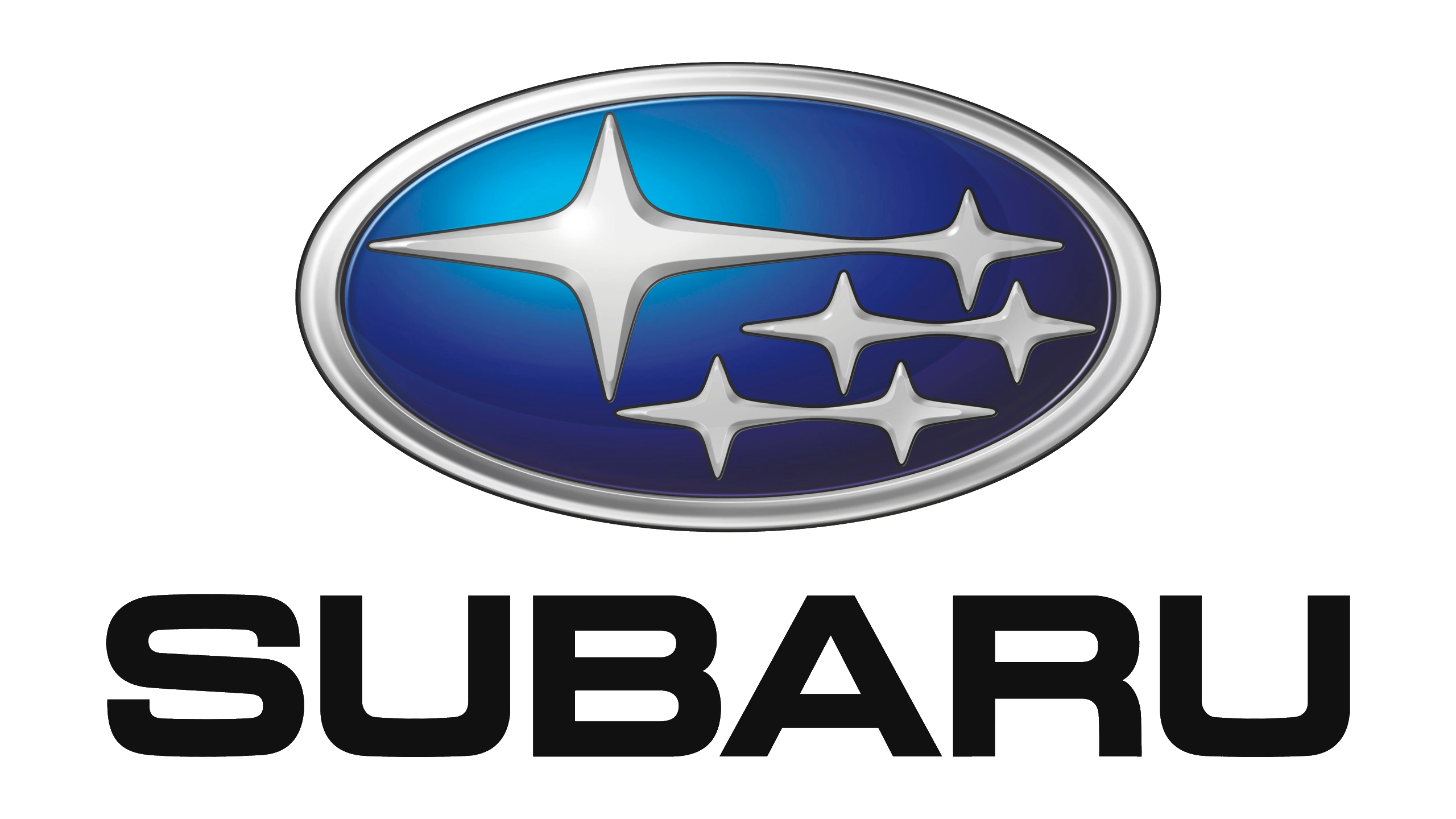

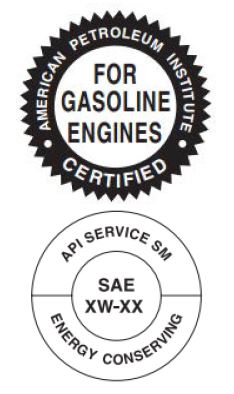
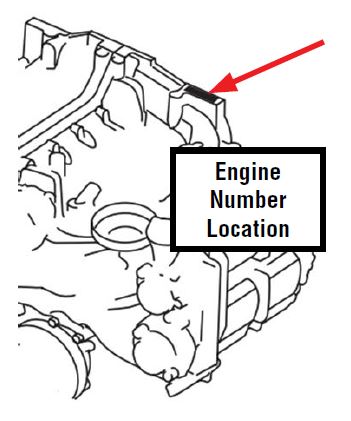
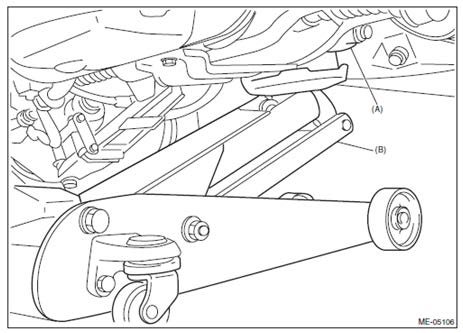
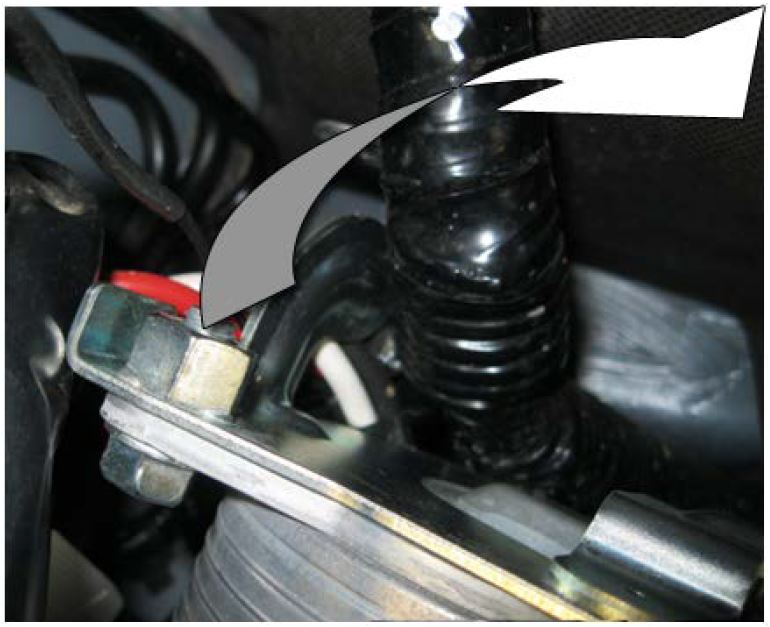
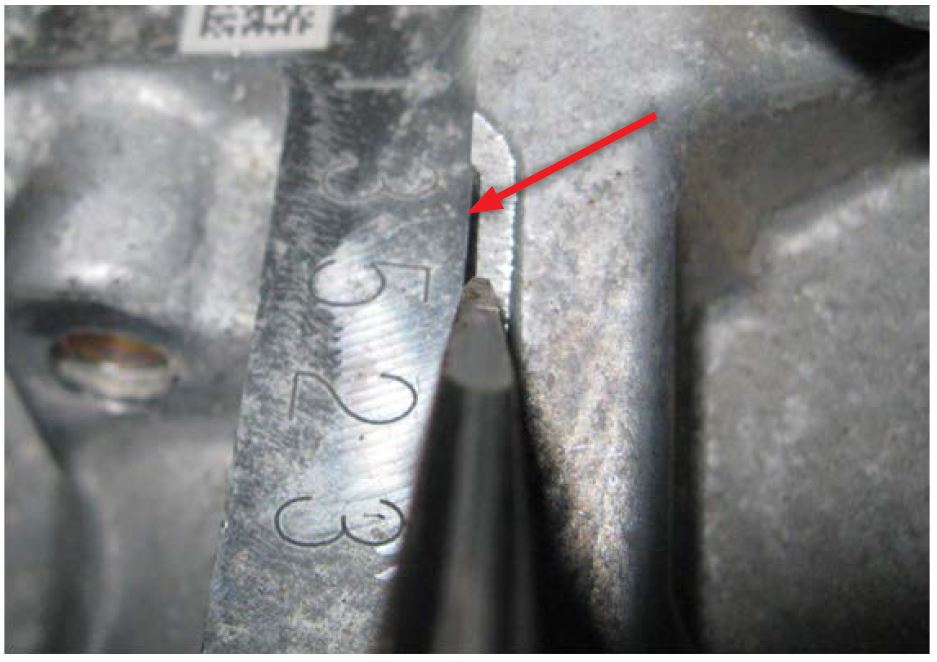
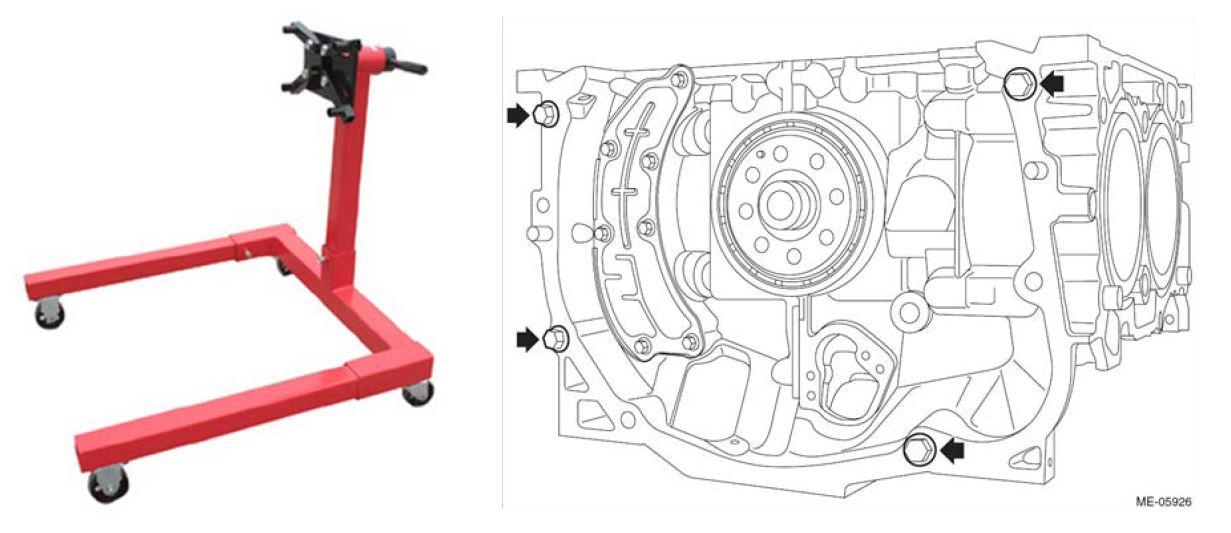
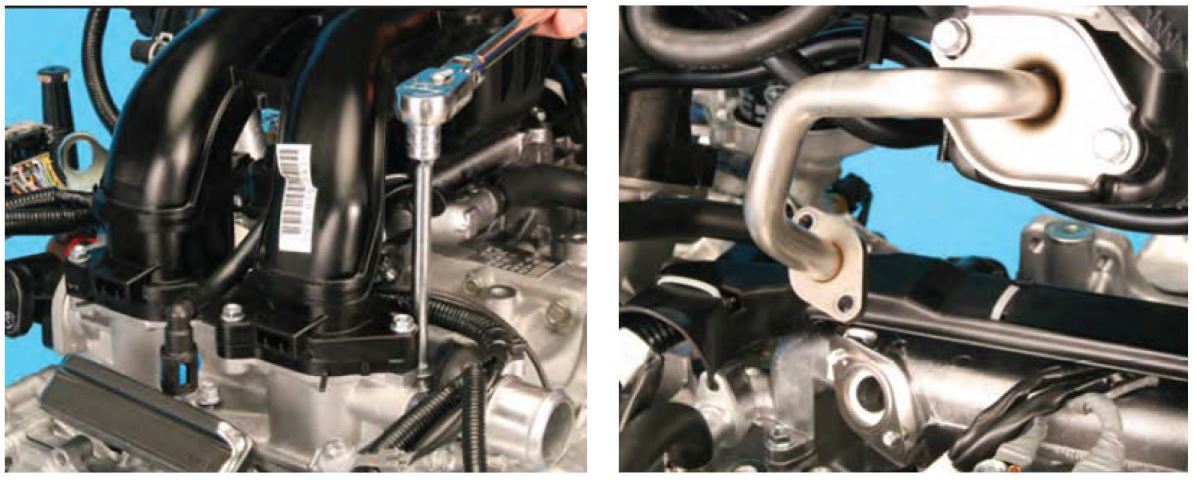
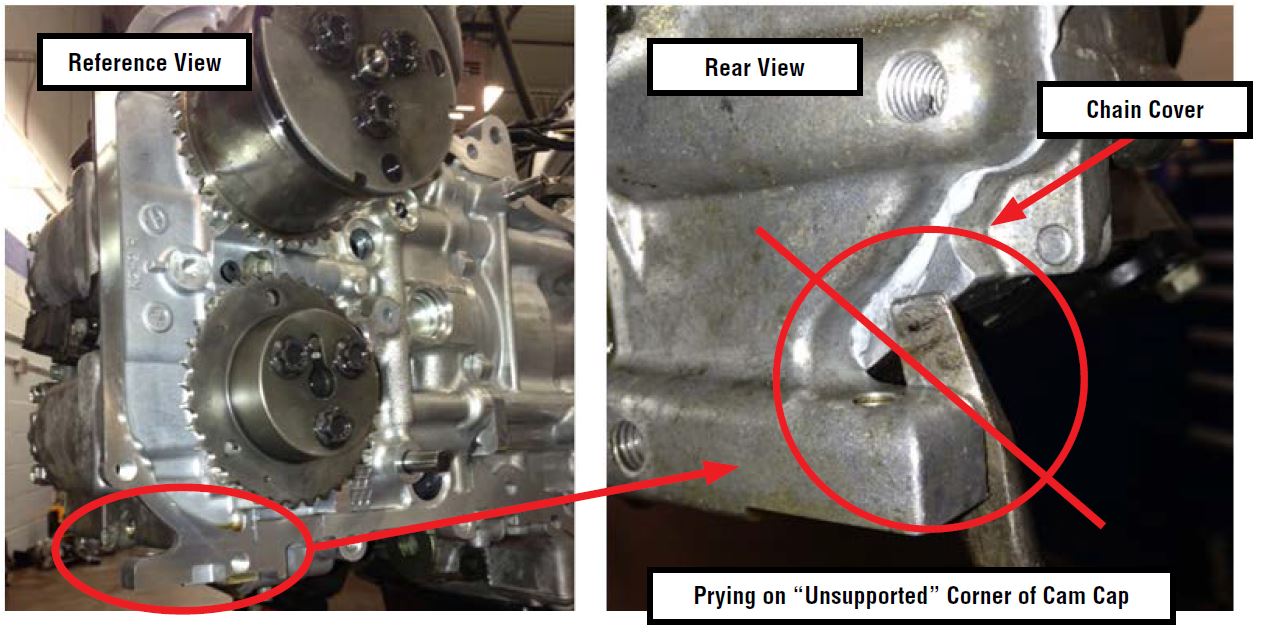
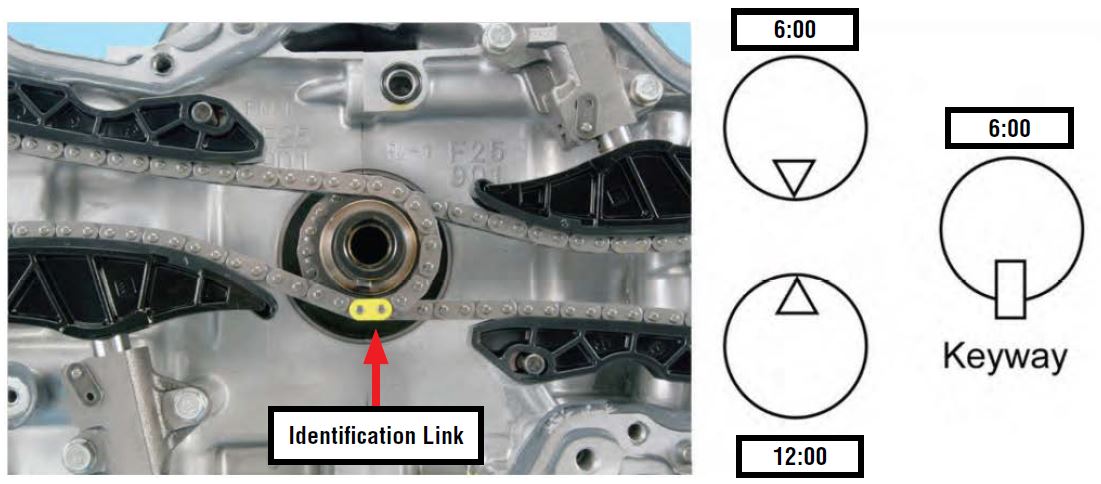
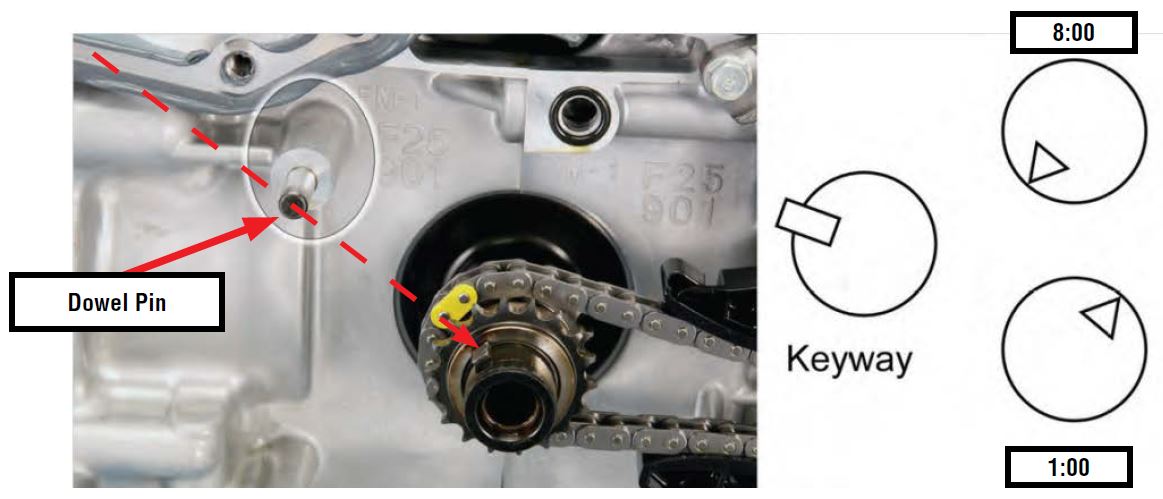
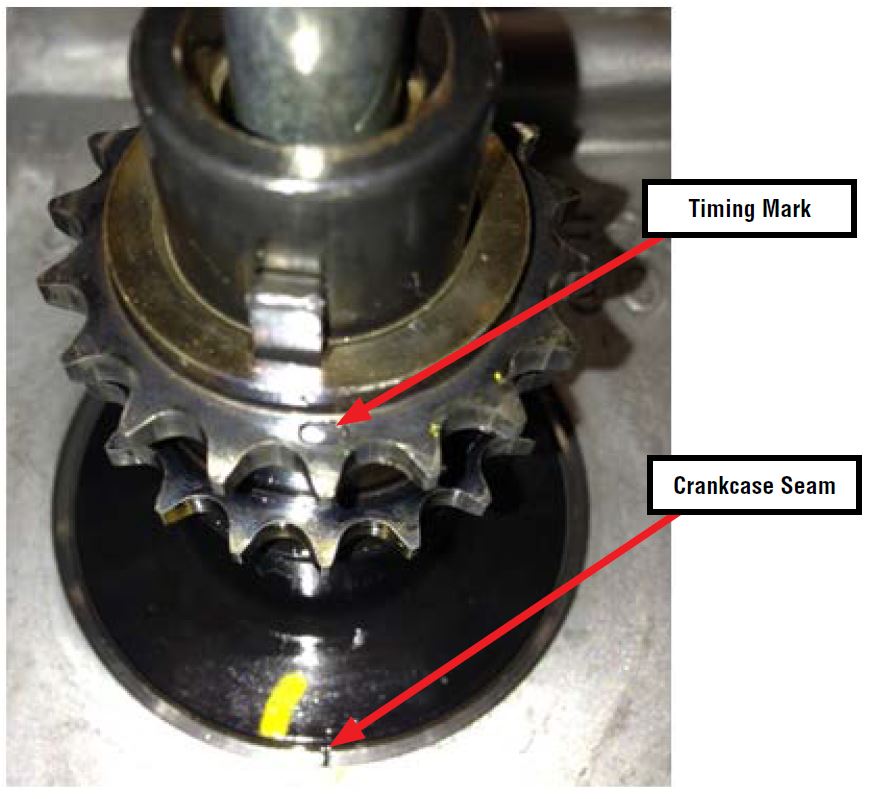
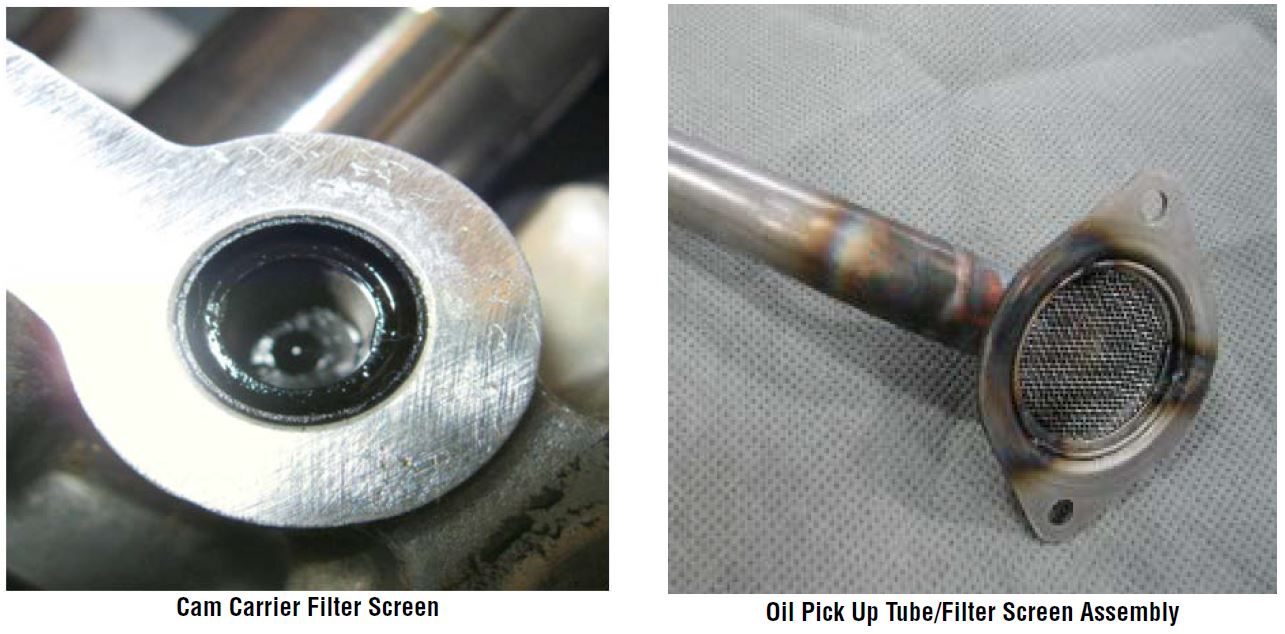
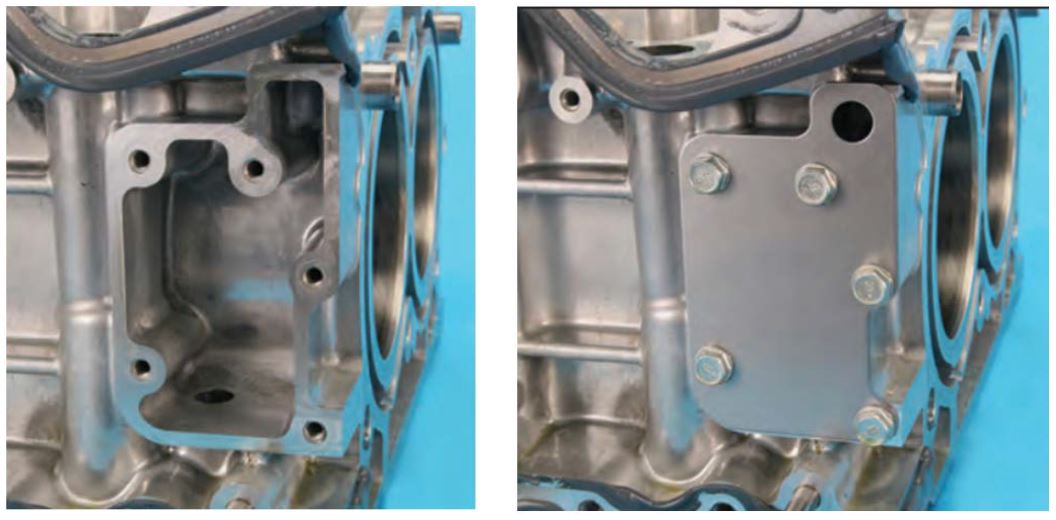
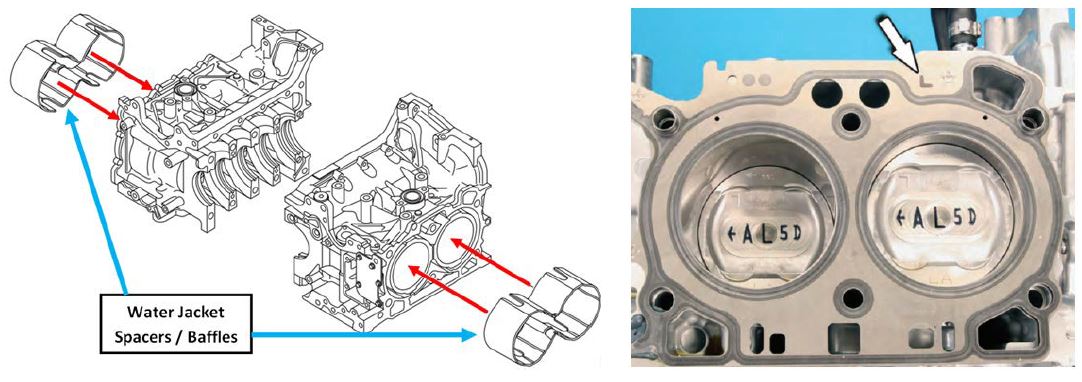
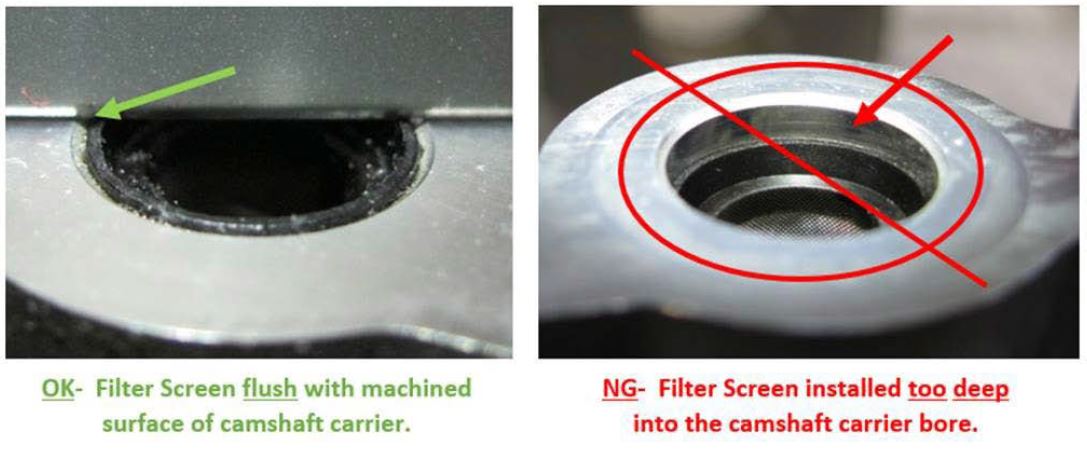
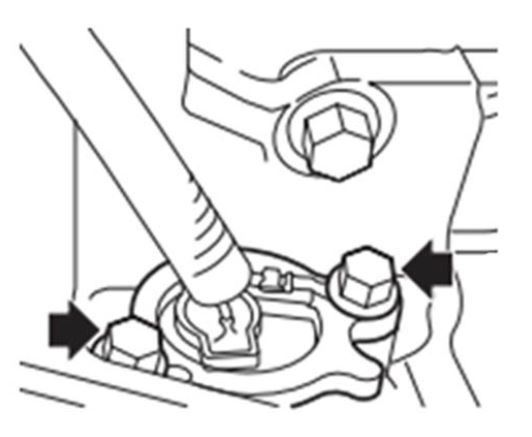
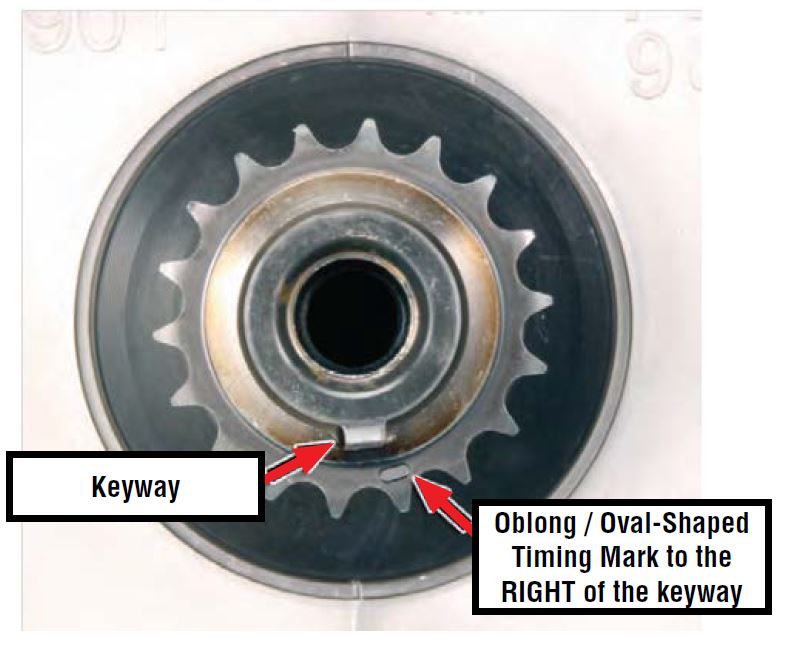
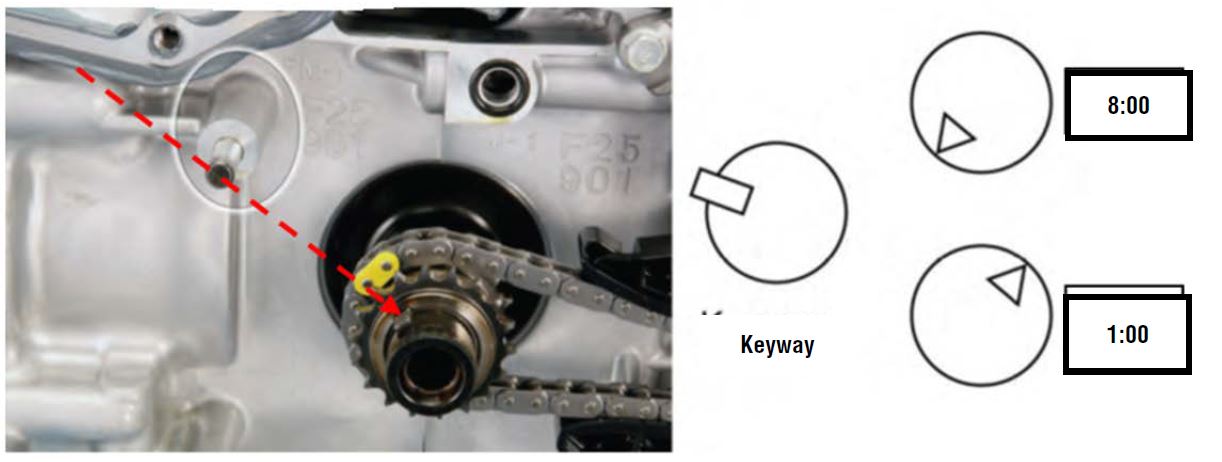

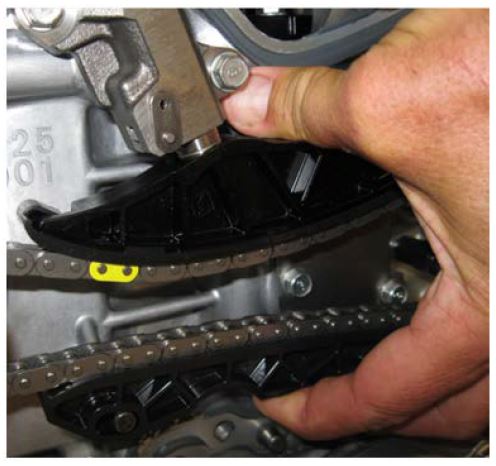
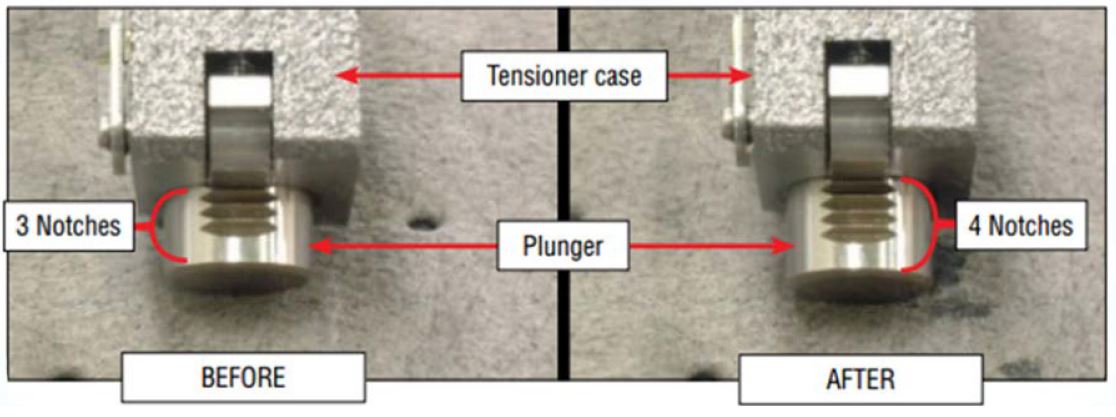
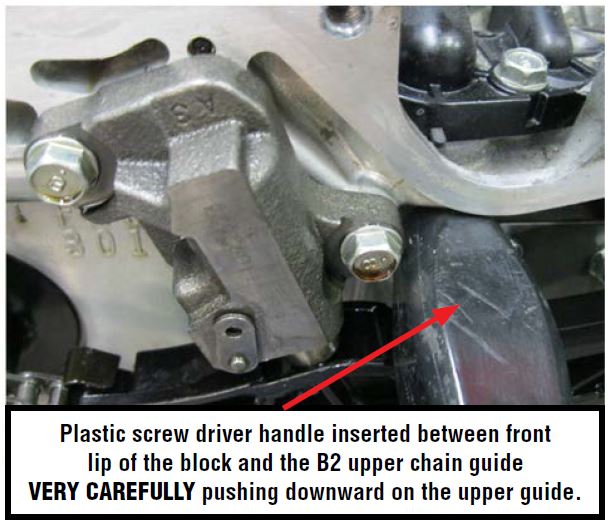

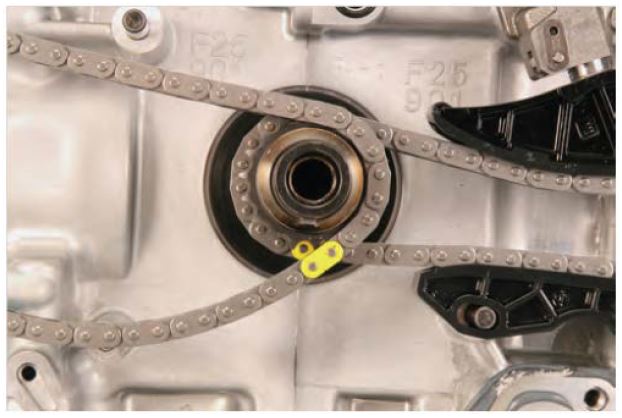
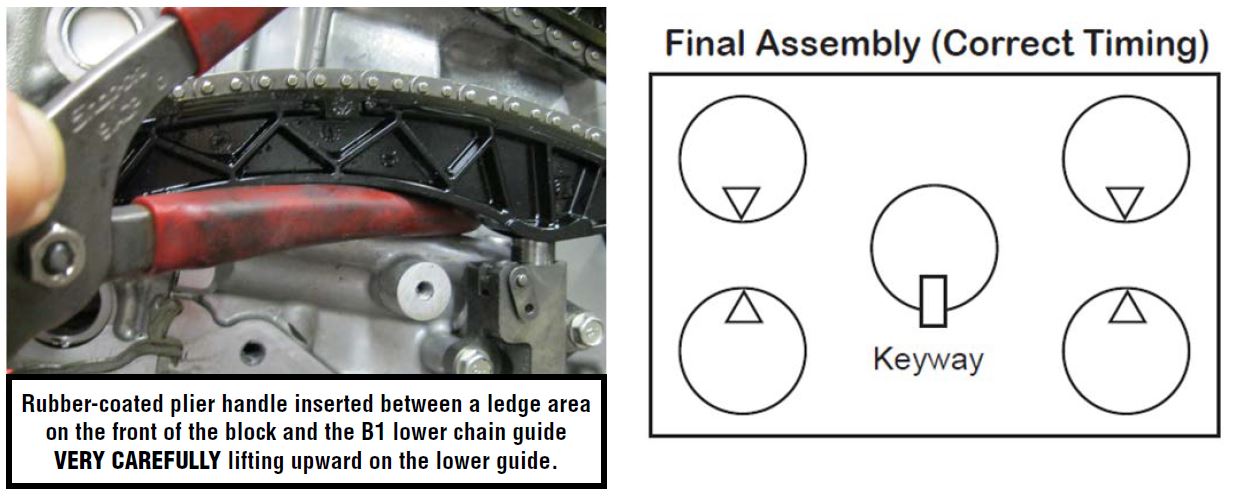
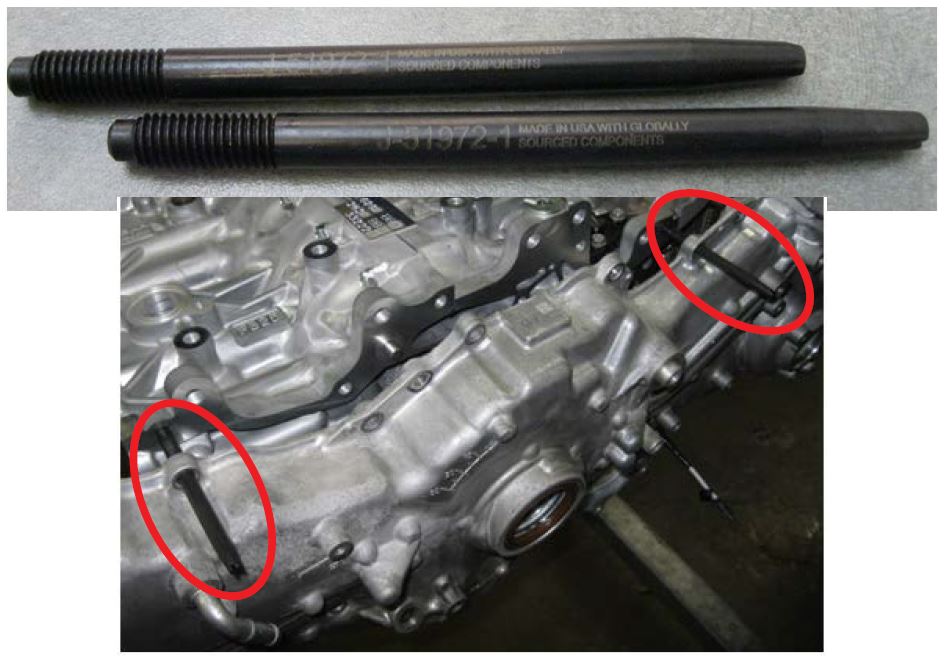






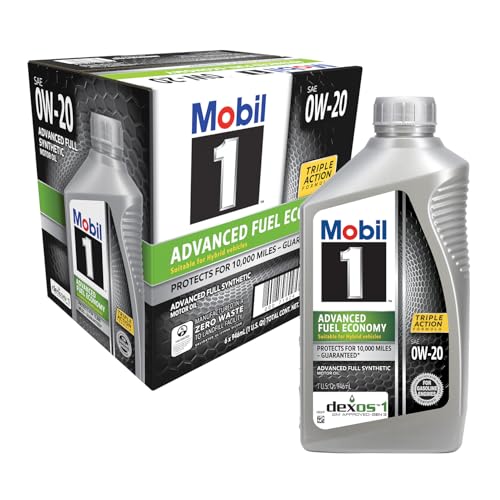

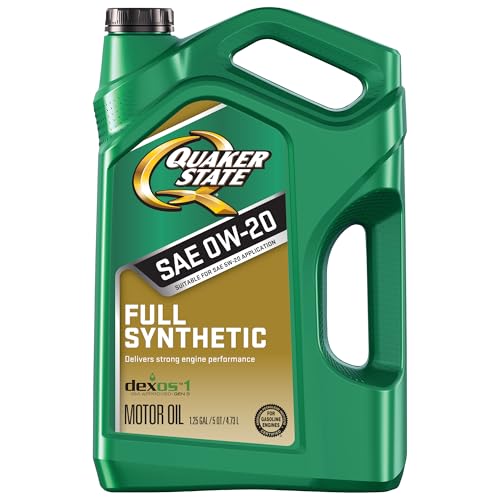

Hello all, I have recently taken my 2013 Subaru Forester for said Oil Consumption test and they overfilled the car with oil about a 1/3 of an inch over the mark that they made on the dipstick – What is the next course of action aside from taking it up to the manger at the Dealer – AS anyone contacted Subaru of America. Have they been any help?
Thank you
I have been dealing with this issue since March of 2015. I bought my 2014 outback in April 2014 and 11 months later this issue started. My dealership screwed me around, and I have all documentation since 2015 concerning this matter. They are now telling me because the vehicle was not repaired prior to April 2017 they will not fix my engine. They want me to pay for the engine. I am contacting an attorney today.
I bought my 2014 Forester used a couple of months ago w/ 78K miles on it (the VIN qualifies it for an oil consumption test). After 3000 miles the low oil level light went on, and sure enough, the car was down a quart. So I added the quart, which brought the level right up to the “full” dot on the dipstick.
Mimicking Subaru’s oil consumption test, I checked the oil again at 1200 miles, and it had gone down, but it was hard to say if it was low enough to indicate the required consumption of 1/3 quart. However, later on, after 3000 miles, the oil level light went on and it was down a full quart.
If the same results happen w/ Subaru’s official consumption test, will this qualify the car for the warranty service?
You will have to check with your Subaru dealer, and most likely they will have to do the oil consumption test.
Also just had Holmgren Subaru in Franklin, Connecticut overfill the oil at the initiation of the test period. Taking it up with the manager today.
I had my local dealer do my last oil change and I have to go back in about every thousand miles because the oil is too low. The last time they filled it up, it was about 2 inches up above the maximum
I had a dealership overfill my test twice.
SUBARU IS OVERFILLING THE OIL ON THE OIL CONSUMPTION TEST!
You are right on this one. I asked for the oil consumption test and the oil was well above the full mark when I got the vehicle!!
That is true happened to me 3/9/2016 they filled about a 1/3-1/2 a quart more. Which would after 1.2K miles fall to the top level